HSP HISTORY Blog |
Interesting Frederick, Maryland tidbits and musings .
|
|
The Frederick Board of Real Estate was two decades old when World War II captivated the country and understandably slowed "business" for the real estate industry on a global level. On the flipside, there was plenty of demand for the talent of these professionals during the post-war boom. At this point in time (1950), the national association had made some changes. One such was registering collective trademarks REALTORS® and REALTOR® with the United States Patent and Trademark Office. In late 1955, the Frederick Real Estate Board is said to have “fallen into a slump.” Some REALTORS® jumped ship and affiliated themselves with the Real Estate Board of Baltimore. However, Calvin S. Lohr would re-energize and reactivate the organization under his direction. This was possibly due to an awareness that newly proposed zoning regulations being discussed would have quite an impact on the Real Estate profession. The Board began to hold regular meetings once more and discussed a standard schedule of commission rates and charges. Back to the Future In 1956, the Frederick Board of Real Estate was removed from the books again of the The National Association of Realtors.® This was partially by design as the local organization would be reinstated as the “Real Estate Board of Frederick County, Inc.” As the "Cold War" prevailed on the world stage, things were still hot in the local, Frederick real estate market. Another development came on the city’s west side in the form of Wyngate in 1960. This would be located between Catoctin Park, Brigadoon and Linden Hills and just inside the newly constructed US15 Frederick Bypass.  US 15 is the descendant of a pair of turnpikes that once connected Frederick with Emmitsburg to the north, and Buckeystown to the south. These turnpikes were reconstructed as state roads in the 1910s north of Frederick, and in the early 1920s from Frederick southward to Tuscarora (also known as Licksville). When US 15 was assigned in 1927, the Tuscarora–Point of Rocks highway had yet to be improved, and this section would not be paved until the early 1930s. The modern Point of Rocks Bridge was built in the late 1930s after its predecessor was destroyed in a flood.  The Frederick Freeway was constructed in the 1950s, and US 15 was relocated to be part of this roadway. The old route of the US Highway, through downtown Frederick via Market Street, became part of MD Route 355. US 15's present highway between Point of Rocks and Jefferson was constructed in the late 1960s, and the old road south of Frederick was replaced with MD 28 and MD 85. North of Frederick, the US Highway bypassed Thurmont and Emmitsburg in the late 1950s and mid-1960s, respectively. US 15 would later be upgraded to a divided highway north of Frederick in the early 1980s. The bypassing of downtown Frederick changed traffic and real estate drastically. Meanwhile, the town’s electric trolley system, which had opened Frederick’s northwest suburbs and Braddock Heights, was now all but a memory, making its final run on the Frederick-Thurmont line in 1954. The busy roadway on Frederick City’s west side ran through the original design for the Rosedale community, nixing plans for residents to live on the west side of Apple Avenue and causing a few “through streets” to be capped off. A tradeoff in this vicinity came in 1957 with the county’s first retail shopping plaza. This was known as the Frederick Shopping Center. Quality of life for nearby neighbors was impacted with the extreme joy, ease and convenience of suburban shopping to compliment suburban living. The Frederick Shopping Center continues to operate today on West 7th Street. US15 served its purpose of moving motorists through the area both faster and safer. It also removed a great deal of congestion from downtown streets, most notably Market and Patrick. Speaking of Patrick Street, on one side of town, one could see the growth of Wyngate to the immediate west of Carroll Creek and Baker Park. Meanwhile, Tulip Hill sprung up southeast of town, just off the Old National Pike and west of the Jug Bridge along MD 144 adjacent the site of today's Maryland National Guard Armory. Monocacy Village had come under construction a few years earlier and would take hold closer to downtown along the north stretch of East Street. To the south of town, once considered below the city limits, was the beginning of Carrollton. Rock Creek Estates would be further out west and between Shookstown Road and US 40. In October of 1960, the Frederick County Board of Real Estate hosted a historic meeting, in which the Maryland Association amended its bylaws to become a “Three-Way” group." By achieving this long-held goal, the Board now represented a solid front of REALTORS® all holding membership in the local Board, the State organization and the National Association of REALTORS.® The local Board incorporated on December 13th, 1961, as the “Frederick County Board of Realtors, Inc.” Frederick's growth was also coming in part due to escalating property tax rates in Montgomery County. At the same time, many families were choosing to live in Frederick County, outside the Frederick City limits, due to high property taxes here as well. Mr. Adlie Magee was president and the first address of the "new" Frederick County Board was Ridge Road, Braddock Heights, MD. Mr. Ruhland C. Boyer and George M. Chapline, Sr. were the other officers of the corporation. Things would be righted in time for a decade that would usher in the era of "the Sixties,” featuring a collection of inter-related cultural and political trends around the globe. This was a decade defined by a counterculture and revolution in social norms regarding clothing, music, drugs, dress, sexuality, formalities, and schooling. The decade was also labeled the “Swinging Sixties.” This moniker is well-deserved due to "the fall or relaxation of social taboos that occurred during this time, but also because of the emergence of a wide range of music from the Beatles-inspired British Invasion and folk music revival to the poetic lyrics of Bob Dylan. Norms of all kinds were broken down, especially in respect to civil rights and precepts of military duty.” An impactful local event came in 1965 when the State Farm Insurance Company would locate one of its 28 regional offices here to Frederick, bringing 240 employees. These individuals required assistance from Frederick’s cast of local REALTORS® in an effort to find new homes for their families. The prior year of 1964 represented a landmark national event with the the signing of the legendary Civil Rights Act. This was certainly the most important news happening in Frederick that year, without compare, officially ending centuries of segregation practices in a city once located within "a border county in a border state" during the American Civil War. Fair Housing A few years later, President Lyndon B. Johnson signed the Civil Rights Act of 1968, meant as a follow-up to the Civil Rights Act of 1964. Long in coming, this legislation expanded on previous acts prohibiting discrimination concerning the sale, rental, and financing of housing based on race, religion, national origin, sex, handicap and family status. Title VIII of the 1968 Act is also known as the Fair Housing Act. The Frederick County Board of REALTORS® once again jumped into action, assisting the municipal government and Frederick County’s Human Relations Committee in an effort to clean-up housing opportunities for the city’s African American population by creating more adequate and dignified housing solutions. This came as a welcome alternative to the dilapidated collection of slums that once existed in many areas of Frederick City. One location of focus was known as Shab Row, located on East Street. In 1958, major action was taken by the Housing Authority which had been in existence since 1938. Slum areas such as Five and a Half Street off East Street (near Laboring Sons Cemetery) and further west spots between Klinehart's Alley and North Bentz Street (between 5th and 7th) were longtime targets. Something drastic needed to be done to not only help unfortunate residents, but to promote a healthier Frederick City. This particular project off Bentz Street would come to be known as the John Hanson Apartments. It was again a prime time for the Frederick County Board of REALTORS® to act. They would make sure there was equity and equality in the realm of housing here in Frederick County. Today, REALTORS® recognize the significance of the Fair Housing Act and reconfirm their commitment to upholding fair housing law, as well as offering equal professional service to all in their respective search for real property. Agents in a real estate transaction are prohibited by law from discriminating based on race, color, religion, sex, handicap, familial status, or national origin. The Frederick County Board of REALTORS®, Inc. continued to stride forward through the waning years of a fascinating time period that saw major protests and other happenings at home. These included such things as the Vietnam War, the assassinations of Martin Luther King, Jr. and Bobby Kennedy, the Apollo 11 moon landing, and a music festival (Woodstock) in rural New York state that attracted over 350,000 participants. In 1968, the wheels for the construction of Lake Linganore were set in motion. Frederick County officials issued the necessary approvals and permits to build the county's first planned unit development in New Market. A greater "love story" could not be written. Here in Frederick on July 1st, 1969, the Board of REALTORS,® under the direction of Mr. William H. Hamilton, began to operate its own Multiple Listing Service. The duplicating and processing of the listings were handled through a business called The Letter Shop. In November of that same year (1969), President Richard Nixon would announce the halt of biological warfare research at Fort Detrick which targeted the elimination of 1,000 area jobs. However, two years later in 1971, he would return to Frederick to announce a plan to convert the military facility into a federally-operated cancer research center. In 1970, Frederick County had a population of nearly 85,000 people. The census taken that year would show seven out of every ten Frederick County families owned their own homes. To underscore the opportunities Frederick County offered for single-family home ownership for the future, it was found that around 58% of the population lived on 1% of Frederick County’s land.  Through the efforts of Frederick County’s Board of REALTORS®, both owners of properties and "would-be" purchasers were now guaranteed equal protection of their best interests in the transfer of real estate. And this same degree of service, of course, would also be granted in the instance of landlord and tenant dealings. The Frederick County Board of REALTORS® reached another milestone in 1972 as it recognized its 50th anniversary. In July of that year, the organization set up its very own office space and secured its own staff under the leadership of the fore-mentioned Howell C. Happ, Jr. The Board began processing its own listings, and the staff secretary helped handle the increased paperwork and filing. On the larger stage, the name of the National Association of Real Estate Boards was changed to the National Association of REALTORS® (NAR). The block "R" logo was adopted by the Association one year later in 1973. Around this time, a newspaper article reported that the organization had “developed into an effective, mature group of 47 Realtors, 18 associate brokers and 400 Realtor Associates. And the group’s growth potential has not yet been reached, officers feel.” Where once the original members had met in one another’s offices for monthly meetings, now gatherings had evolved into dinner meetings held at Watson’s Restaurant. Most of the organization’s actual business had become handled by an executive staff and the Board of Directors at regular monthly luncheon meetings. It is at this time that the county’s local Board began concentrating its efforts on humanitarian goals with increased emphasis placed upon serving the fellow man. This could be done through the REALTORS® national endeavor, the “Make America Better” program. Since 1923, the Francis Scott Key Hotel had been the center of hospitality for four decades when articles began appearing in the local newspapers of an up and coming competitor to be built on the outskirts of downtown to the west. Local businessman Dan Weinberg was a master in the field of entertainment and hospitality with multiple theater holdings, not to mention the town's bowling lanes (Terrace Lanes), borrowing its name from nearby College Terrace, a community that had come about at the time of Frederick's premiere hostelry for business travelers and visitors alike. With the Frederick Bypass, came the need to provide an opportunity for a state of the art, luxury hotel as their already existed a few smaller motel venues already along the National Pike and Route 15. He would be bringing the fabled "Holiday Inn" brand to Frederick to battle the "Star-Spangled"-inspired Goliath that helped launch the Frederick Board of Real Estate in the first place. Golden Commercial Real Estate In the late 1960s, major land would be annexed along West Patrick Street/Route 40 west of the downtown Frederick City, and beyond the new residential communities built over the previous decade. Although a few restaurants and a “Drive-In” movie theater (begun by Mr. Weinberg, himself), had been here. This would fast become a hub for commercial development the likes that the community had never seen. The stretch would earn the nickname of “The Golden Mile.”  Frederick News (July 25, 1968) Frederick News (July 25, 1968) Dan Weinberg's Holiday Inn would eventually receive competition from across the street in the form of the Red Horse Motor Inn, which opened in early 1969. Soon enough, there came an onslaught of fast-food restaurants, retail stores and an indoor mall. These were constructed along this stretch where once stood regal farms dating back to Frederick’s beginning. This, in part, would cause a cultural shift reflecting what was happening across the country. Ease of accessibility from highway travel, with emphasis on parking, made suburban-based retail pursuits more attractive to customers. On the flipside, downtown retail establishments that had flourished in earlier decades would be severely impacted. Suburban living was becoming the norm and a desired approach for young families headed by professionals. Frederick could now be defined as an up and coming “bedroom community” or "commuter town." These terms denote that the population of a particular location is primarily residential rather than commercial or industrial, boasting residents engaged in routine travel from home to work and back. Many professionals working “down the road” in such places as Montgomery County and Washington, DC suddenly chose Frederick to call home. Now more than ever before, the need for talented and knowledgeable REALTORS® here in Frederick was critical to help an influx of new residents choosing Frederick to be their new bedroom. On the eve of the 50th anniversary year of the founding of the Frederick Board of Real Estate (back in 1922), the following "Real Estate" page in the Frederick News of December 29th, 1971 shows some of the talented professionals that assisted so many individuals over a twenty year span from 1960-1980. This era saw a county population explosion of roughly 37%. Single family developments such as Clover Hill (having already been in play now for a few decades) and Mount Laurel Estates to the northwest of Fort Detrick, nearby townhouse communities of Amber Meadows and Fredericktowne Village brought additional residents to Frederick. Waverly Gardens, Rock Creek, Hillcrest Orchard, Stonegate and Willowcrest took their respective places along “the Golden Mile” as well. Frederick soon adopted the moniker, “Frederick, Maryland: Away from the Madding Crowd.” This was turned into a bumper sticker by the upstart Tourism Council of Frederick County which began as a committee in 1974, formed under the Frederick Chamber of Commerce. The Tourism Council would be officially organized in 1976. Historic preservation of old houses and former business buildings began taking form, and the Marcou O’ Leary study, under a movement called Operation Town Action, sought to catch downtown Frederick from experiencing certain death under the auspices of the continuing suburbanization trend. Things, however, seemed to be holding steady for downtown Frederick as productive strategies and plans were being sought. While the nation celebrated the Bicentennial of American Independence, Frederick political and retail leaders, along with a legion of local REALTORS®, were extremely proud and pleased to be named an “All-America City” by the National Municipal League. Frederick had won this distinction due to ongoing, proactive efforts undertaken by local groups to preserve the city’s historic sites and garner various government-sponsored revitalization projects. Things, unfortunately, would “go under water,” both literally and figuratively, in the fall of that memorable year.  Flooding Floods are among the most common and costly natural disasters in the United States. Even smaller events can have a devastating impact. Many consumers have suffered the consequences as they bought homes before learning of a flooding risk. Frederick County has had a history of flooding, thanks in part to mountain water runoff feeding several local creeks and streams eventually leading to the larger Potomac and Monocacy rivers. On October 9th, 1976, the City of Frederick was ravaged by flooding just as it had been over a century before in 1868. In this earlier “water disaster,” the town’s most famous house, that of Civil War heroine Barbara Fritchie on Carroll Creek, became a casualty. It would be razed shortly thereafter. The later “freshet event” of the 1970s is referred to as the Great Frederick Flood of ‘76. Safeguarding homes and businesses for the future centered on a “state of the art” flood control project, which helped propel the rebirth of downtown Frederick over the next few decades. Other areas around the county have experienced flooding issues as well, and FCAR fought for helpful land-use guidelines in the form of the county’s Monocacy Scenic River Study and Management Plan originally approved in 1990 and since updated. Flood zones have been properly identified for related insurance purposes to assist property owners in the event of a potential incident. Thanks to REALTORS®, flood risk data is included on each listing’s “details page” and FCAR’s local agents help their clients interpret the flooding risks of properties. As for the future of Frederick and flooding, it was wholeheartedly thought that residents and town leaders never wanted to see the likes of a disaster of this magnitude ever again. Frederick Mayor Ron Young struggled to get a major flood control project off the ground, one that promised to help ease flooding problems, but also would make the area more attractive. The Carroll Creek Linear Park Project hit a financial roadblock as citizens felt the project was too costly. Thankfully, the project would eventually come to fruition, and is a key draw for both residents and visitors alike.  Renaissance and Revival Looking back, Frederick City had the remarkable experience of living in a state of “benign neglect” for many years as it was not profitable to do anything with many of the old buildings in town. This was probably the greatest thing that could have happened to Frederick as it was placed in somewhat of a time capsule. In the decades to come, these historic shells would be used to house nouveau ideas and businesses. Adaptive reuse would further give Frederick a unique character and vibe all its own. Many residents started fixing up old houses downtown. Buildings were repaired, repainted, and relived in as gardens were revived and trash cleaned up. The Historic District was resurrected and became sought after real estate, especially by out-of-towners and “empty-nesters” from places like Washington, DC and Baltimore looking for a smaller town, complete with big town amenities and activities. Beginning in the mid to late 1970s, merchants slowly began opening specialty shops downtown. At this same time, legal and medical professionals were opening business offices as well. Then came a new wave of authentic restaurants throughout the 1980s. Historic structures were turned into antique galleries, professional buildings and shops. Legal, realty and other business offices located in the Weinberg Plaza, Blackhorse Plaza, the Court View Building, the West Park Building and the Patrick Center. New retail, professional and technology offices would open along the edges of the city on Opossumtown Pike and Thomas Johnson Drive and Hayward Road. Evergreen Point would grow tremendously following the opening of the I-70 Truck Stop at the northern end in 1978 and the Francis Scott Key Mall at the southern end. Fast food places, gas stations, convenience stores, and car dealerships followed soon after. Several new housing communities developed throughout the 1980s, including additional planned neighborhoods and bedroom communities. Tremendous residential growth occurred on both sides of “the Golden Mile,” and south of town along Ballenger Creek Pike and New Design Road. North of town, Clover Hills II and III mushroomed. Technology Corridor and Continued Growth Preservation Throughout the 1980s and into the 1990s, Frederick lured several white-color research and operation centers belonging to large businesses. Interestingly, this was reminiscent of what occurred here 40 years earlier as Fort Detrick jobs brought medical field professionals to the area. Many of these new companies located in industrial complexes such as the 270 Technology Park, the Frederick Industrial Center, the Westview Corporate Campus, and the Frederick Research Park. With them they brought a variety of industries and additional career opportunities. More importantly these people also came as new residents in need of housing. They would further enrich the community as did the Detrick boom of the post-war era. Things weren’t just happening downtown, but all over the county as municipalities began expanding their boundaries and growing outward with new developments and retail facilities to serve locals. The county population grew by 30,000 by 1980 with 114,792 residents. By 1990, this number would be 150,208, three times the county population back in the early 1920s and birth of the Frederick Real Estate Board. The Frederick County Board of REALTORS ® organization headquarters had moved in 1980 to 340 North Market Street. In 1988, 66 years after the founding of the original Board of Real Estate, a nice article and picture in the Frederick News-Post touted the fact that the Frederick County Board of REALTORS ® officers of that year were completely comprised of women. This was a noteworthy role reversal from the original Board that was begun, and dominated for years, by men. Thanks to the women’s touch, two new fundraising projects were imagined in the form of a fashion show held at a local hotel with proceeds benefitting several local non-profits; and a cook-book entitled Sold on Cooking, featuring favorite home recipes from local member REALTORS.®  In 1989, the Frederick County Board of REALTORS® became the Frederick County Association of REALTORS.® The organization adopted the marketing catchphrase "The Voice for Real Estate" and added this as part of its official logo. Along with this theme, the Association encouraged its members to include the REALTOR® emblem on their business cards and stationery. In 1991, the National Association of REALTORS® (NAR) formalized its international programming with the creation of the International Section to administer the Certified International Property Specialist (CIPS) designation and other programs for international specialists. Over the 1990s and 2000s, more restaurants, shops and offices would continue to locate in downtown Frederick. Likewise, many people began choosing to live in the city, experiencing some of the unique features found in many of the historical apartments and townhouses. New housing developments encircled the city, including Old Farm, Whittier, Farmbrook, Foxcroft, Overlook, Monarch Ridge, Kingsbrook, Worman’s Mill, and fittingly one carrying the legendary name of Tasker’s Chance paying homage to the original land grant developed into the planned community of Frederick Town by early founder Daniel Dulany. The Frederick City census, taken in 1990, reported 40,186 citizens. This would balloon to 65,239 in 2010. Main Street communities and suburbanization was big “News” in the new millennium, compounded with the housing bubble of the mid-2000s. Seemingly by design, 2008 marked the National Association of REALTORS® centennial anniversary as the preeminent organization for the nation’s real estate professionals. Frederick County’s REALTORS® were certainly kept busy. To the north of Frederick City, Thurmont had basically expanded horizontally with cluster development and into Catoctin Mountain itself. This also happened in places like New Market, with the addition of nearby sleepy hamlets of Ijamsville and Monrovia becoming major population centers. West of New Market, Lake Linganore won accolades back in the 1970s for its novel living around the namesake man-made body of water This area continues to grow today as has Spring Ridge in all its majesty along the old National Pike. To the west of Frederick, on that same historic road that served as the first major roadway west into the interior of our country, Middletown Valley was especially attractive to new residents, as farms dating back to colonial times now became large housing developments outside old Middletown, Jefferson and Brunswick. The same can be said for the Carroll family of Annapolis’ original land patent of Carrollton Manor. Growth hit small villages that formerly served as urban centers for area farmers, originally boasting churches, schools, graveyards and depot stops for the early Baltimore & Ohio Railroad. These included places such as Buckeystown, Adamstown, and Point of Rocks. Lastly, the far reaches of Emmitsburg gained more homes along US 15, and Urbana is a case study of how a simple crossroads village locale can take on a major persona of its own. Major development here began in 1999 and has taken a population of roughly 600 at that time to near 12,000 in the current day. Community Involvement More than assisting buyers and sellers, the Frederick County Association of REALTORS® has become known and respected near and far for the humanitarian efforts that it has continued to perform in earnest since the 1970s. FCAR is especially proud of its community involvement, both as an organization, and that of its individual members. Since the inception of the original Frederick Real Estate Board in 1922, members have served the Frederick community through participation in church groups, civic groups and service organizations, not to mention carrying out targeted fundraisers to benefit local charities and non-profit groups.  In 1975, the organization began active participation in establishing a much-needed Housing Coordinator for Frederick County. They also got involved in other endeavors such as sponsoring the annual “Buck-a-Cup, Brace-a-Child” campaign for the Easter Seals non-profit, assisting the Junior Woman’s Club of Frederick in the Operation Red Ball child alert program, and by making contributions to worthwhile charities and programs of time and money. Some FCAR members have established scholarships, while others have given back through active participation in monthly soup kitchen service days, fundraisers, supply drives and other charitable causes. FCAR has gained honors, both on the state and national level, for its various philanthropic and educational programs, the latest of which comes with the new FCARe Fund. Established with the Community Foundation of Frederick County, this initiative is designed to ensure local nonprofits receive vital support in helping with their missions as they continue to serve Frederick County.
The Charles S. V. Sanner Award is to be given to the member who best exemplifies the standards Mr. Sanner lived by. The criteria is as follows: 1.) For high ethical and professional standards in their own business dealings. 2.) In the furthering of increased ethical and professional standards within the industry. 3.) Through their active participation in Board activities has sought to enhance the public image of the REALTOR.® The following editorial appearing in the Frederick News-Post, two days after Mr. Sanner's passing, paints a picture of this special man and the indelible impression he left on not only the Frederick County Association of REALTORS,® but also the industry in general and his home of Frederick County, Maryland.
Conclusion Since its founding a century ago, the Frederick County Association of REALTORS® has expanded in scope, advocacy and civic awareness. REALTORS® have always been at the heart of both commercial and residential growth throughout Frederick’s history. During the 100th anniversary, the opportunity has allowed present-day members to celebrate the contributions of REALTORS® in history and how they have shaped the future of this great community. The founding principles created to promote the real estate profession and foster professional behavior in its members (including its own code of ethics) still reign supreme today. For 100 years, this organization has demonstrated important leadership in advocacy for a myriad of community issues relating to the real estate trade. With over 1350 current members, FCAR stands as the county’s largest trade association. Holding tried and true all these years later, the overarching mission is that of serving as the “Voice for the Frederick Property Owner.” After displaying this humble overview of the past 100 years of a special organization in a special place, the story certainly does not end here. Instead, it simply takes pause to see where the Association has been in its past, while realizing where it is in the current day and diligently plans for what it wants to do in a second century of service to the greater Frederick community. In closing, that next chapter of service and professionalism begins with FCAR’s Strategic Framework, and 2021-2023 Strategic Plan presented here. Mission Statement The mission of the Frederick County Association of REALTORS® is to promote the highest level of ethics and professionalism, protect private property rights, and advance the interests of our members and the communities they serve. Vision Statement Through a vibrant culture of volunteerism, the Frederick County Association of REALTORS® is recognized and respected as the united voice for real estate and an advocate for positive change in the community. Long-term Goals Value to Members To be the essential source for information, professional development and business tools that drive the success of members at all stages of their career. Outreach and Influence To be an influential advocate for the industry and sought after as a partner in addressing real estate and related issues as part of sustaining a healthy, vibrant community. Member and Industry Engagement To be the association of choice for all those engaged in real estate in Frederick County and to provide the means for every member to contribute to their industry, their community and to invest in their personal and professional success. Association Structure, Governance and Operations To be an efficient, fiscally sound and innovative association with the staff capacity, strong leadership bench, and positive, member-first culture that can fulfill its mission at the highest levels of excellence. FCAR Operating Values Access to Housing. We believe that safe, decent, affordable housing should be within reach of every citizen in Frederick County. Quality of Life. We believe that a healthy real estate sector contributes to a high quality of life and makes Frederick County a desirable place to live, work and play. Diversity, Equity and Inclusiveness. As REALTORS® we believe that it is our responsibility to represent and serve all citizens in Frederick County, regardless of race, ethnicity, gender, beliefs or lifestyles. Integrity. We commit and are accountable to the highest standards of ethics and professionalism in the industry. Agreement to operate the Association Inclusiveness. As the united voice for real estate, we seek to represent and serve members in all industry sectors, residential, commercial and allied businesses. Respect. We believe that when we seek out the opinions of others, listen to and honor our differences, we will make the best decisions on behalf of all members. Collaboration. We believe that through partnering with our legislators and community leaders, we can solve the toughest challenges and work toward a shared vision for Frederick County. Transparency. We are open and honest in our deliberations with each other, and in communicating our actions and decisions to our members. Commitment. We take seriously our responsibility to support and act on behalf of our members and use their resources wisely in pursuit of our mission. Leadership Development. We believe that a primary responsibility of leaders in our industry, Association and community is to develop future leaders who can bring fresh ideas and continue to effect positive change. In Memoriam Viva la Frederick! Thousands of hard working real estate professionals are responsible for the great city and county we enjoy today. It's been a long journey since Daniel Dulany designed his fledgling town on Maryland's western frontier and began selling lots to adventurous immigrants. Many REALTORS® wore the moniker proudly and have passed away over the years. New individuals have picked up their cause of serving as "the Voice of the Frederick Property Owner." Although there were those that worked in the field of residential and commercial real estate before 1922, its important at this time to remember those industry pioneers who put the Frederick County Association of REALTORS® in play back in February, 1922 by organizing the Frederick Real Estate Board. Interestingly, all five founding officers are buried in Frederick's Other City, Mount Olivet Cemetery. Richard Potts (1873-1945) Markwood D. Harp (1869-1926) Walker N. Jolliffe (1876-1931) Markell H. Nelson (1882-1973) Noah E. Cramer (1860-1930) ***Be sure to read parts 1 & 2 of the centennial history of Frederick County Association of REALTORS® (Click below)
1 Comment
In the year 1900, Frederick City had a population of 9,296 against a county population of 51,920. To the west, Hagerstown boasted a population of 13, 591 and Cumberland had 17,128. Frederick's proverbial "die was cast" in favor of mostly agrarian pursuits in deference to industry like its major western Maryland counterparts. Selling and trading of real estate and homes had been occurring since Frederick’s rustic beginning in the 1740s. Real estate tradesmen metaphorically worked in silos. Local leading businessmen and government leaders took interest in a movement in communities throughout the country in which enclaves called “real estate boards” were being organized. The Frederick newspapers frequently ran articles announcing these entities in other states, and places within Maryland starting with Baltimore.  Birth of the Frederick County Association of REALTORS® The National Association of REALTORS® was founded as the National Association of Real Estate Exchanges on May 12th, 1908 in Chicago. With 120 founding members, 19 Boards, and one state association, the National Association of Real Estate Exchanges' objective was "to unite the real estate men of America for the purpose of effectively exerting a combined influence upon matters affecting real estate interests." The Association's founding boards included those of Baltimore; Bellingham (WA), Chicago, Cincinnati, Cleveland, Detroit, Duluth (MN), Gary (IN), Kansas City (MO), Los Angeles, Milwaukee, Minneapolis, Omaha, Philadelphia, St. Louis, St. Paul (MN), Seattle, Sioux City (IA), and Tacoma (WA) along with the California State Realty Federation.  Since 1908, the National Association has held its annual conference in numerous US cities. The Code of Ethics was adopted in 1913 with the Golden Rule as its theme. In 1916, The National Association of Real Estate Exchange's name was changed to the National Association of Real Estate Boards (NAREB). That same year, the term “REALTOR,” identifying real estate professionals who are members of the National Association and subscribers to its strict Code of Ethics, was devised by Charles N. Chadbourn, a past president of the Minneapolis Real Estate Board. Kickoff Much discussion and planning would eventually culminate in the organization of a body of this kind in Frederick, Maryland in February 1922. It would be named the Frederick Real Estate Board. The group had received considerable guidance from Baltimore City’s Board of Real Estate and another that had been recently started in Cumberland. The first official announcement would take place at a meeting held on February 9th. On February 9th, the Frederick News shared information about this new group's start and exclaimed: “Along the lines of recent developments towards the adoption of a more progressive method of doing things for the betterment of the community and conditions in general, the real estate agents of Frederick city and county have organized a real estate board which is in line with similar movements made elsewhere throughout the United States. Like the Chamber of Commerce and the recent campaign in the interest of the new community hotel, this organization is a step forward in the development of a better realty situation and it will reflect a corresponding benefit to the real estate owners and purchasers as well.” The early goals of this organization included “the promotion and advancement of general real estate and house building interests of the city by cooperative effort; and, where possible, the discouragement and prevention of the introduction of other elements into the community which would have a depreciatory effect upon the surrounding real estate.”  Tanneries were among those businesses considered "dirty industries." Tanneries were among those businesses considered "dirty industries." Frederick’s Real Estate Board took aim at cooperating with the Frederick Chamber of Commerce and other civic and business organizations in encouraging public improvements to accommodate property owners and securing an equitable system of taxation. The new group set out to further promote Frederick as a location for new and desirable business enterprises, while making important strides to rid, or clean-up, existing “dirty industries” for the betterment of the community. Lastly, this body hoped to form equitable rules for the conduct of the various branches of the real estate business upon a high ethical plane. They sought to establish the fact that membership in the organization would be a guarantee of business integrity and responsibility to the general public. The Frederick Real Estate Board would eventually expand to cover the entire county. In addition, important affiliations would be made between this local Board and both The Maryland Real Estate Board (founded in 1906) and the National Association of Real Estate Boards (founded in Chicago in 1908). In doing this, Frederick’s members received the benefits of experience, advice and best practices from a network of real estate professionals elsewhere in the state, and country. Today, the Frederick Board of Real Estate Board is known as the Frederick County Association of Realtors.® In the beginning, the initiation cost to become a member was $10, with an additional dues cost of $10/year. The local newspaper of February 9th concluded by saying: “An organization such as this cannot but result in great good to the community, and an advancement in the way of improvements, not only in the matter of attaining a city beautiful, but in business conditions generally.” The Inaugural Board The driving forces behind Frederick’s inaugural Real Estate Board were a talented group of experienced Frederick professionals. These 12 gentlemen would meet once a month in one another’s offices on a rotating basis. The first officers included Richard Potts (President), Markwood D. Harp (Vice President), Walker N. Joliffe (Treasurer), Markell H. Nelson (Secretary) and Noah E. Cramer. The latter, Mr. Cramer (1860-1930), had been Frederick’s leading realty professional and a well-respected businessman over the previous few decades. Noah E. Cramer was in great company with the initial Board of Directors for the Frederick Real Estate organization. Six years earlier, President Richard Potts (1873-1945) was in the center of the College Park situation, as a liaison of sorts between the West Virginia-based Swastika Realty firm who owned the building lots, the city officials of Frederick, and customers interested in buying into this subdivision. Potts recognized the importance of local knowledge, insight and connectivity. This prompted him to act in advocating for Frederick to have its own Board of Real Estate in the first place. Richard Potts Richard Potts (1873-1945) came from a prominent family who lived in Court House Square. He was the 4th generation to live at the prestigious home located at 100 North Court Street, on the corner of West Church Street, and across from Frederick’s Courthouse Square. His great-grandfather was Richard Potts, a noted politician and leader in Frederick throughout his lifetime. After receiving an early education at the Frederick Academy, followed by the Episcopal Academy in Alexandria, VA, Mr. Potts went to work as a clerk at the Central National Bank and Trust Company. In 1914, he entered the real estate business, forming a partnership with insurance salesman David O. Griffin. The firm of Potts & Griffin would last for 30 years until 1943, and was headquartered with an office at 27 N. Court Street, just a short distance from Mr. Pott’s home. Markwood Doub Harp (1869-1926) was a Frederick County native from Myersville who received his education in the local schools there. He came to Frederick City for professional work and served as Frederick County’s Deputy Register of Wills before becoming Clerk to the County Commissioners. He would leave that position to become a realtor and lived at 313 Dill Avenue (renumbered to 269 Dill Ave today). Mr. Harp’s brother, Reno S. Harp, was a leading attorney in town. In the Real Estate Board’s second year, Markwood Harp would take the reins as president. Sadly, Mr. Harp would die just a few years later in late 1926 after a three-week illness attributed to heart trouble. He was 57 years old. Harp's widow, Bertha Almeta (Kiracofe), would assume his position in selling real estate and insurance after his death. She would work out of her husband's office at the Pythian Castle on Court Street, and was assisted by her daughter. This would make Bertha, Frederick's "first-known female real estate and insurance agent." She lived from 1885-1965. Walker Neill Joliffe was born at Clearbrook near Winchester, Virginia in 1876. He grew up on the family farm to Quaker parents. He clerked at two different stores in his native Frederick County, (VA) before coming to Brunswick in 1896 to clerk for the general store of Jones & Robinson. In 1900, Mr. Jolliffe entered a partnership with H. M. Jones, of Brunswick, and in 1904 these gentlemen established a dry goods, clothing, boot, and shoe store in Frederick City. Immediate success prompted the pair to open a store in Mr. Jolliffe’s native home city of Winchester. He would soon take up residence at 307 Rockwell Terrace. Walker Jolliffe transitioned over to working here in Frederick in the real estate business in 1919 with his brother, John. The two ran an office at 122 North Court Street. Walker Jolliffe would experience success in his newfound field but would die in November, 1931 of tuberculosis shortly after being sent for treatment at the noted asylum in Sabillasville (MD). He would be fondly remembered at the Board of Real Estate’s 10-year anniversary gala in 1932. Markell Henry Nelson (1882-1973) was born on a farm in Mount Pleasant District in 1882. He acquired his education at the Central School and later went on to the Frederick Academy. For years Mr. Nelson clerked in a store at Sandy Spring, across the Potomac River from Harpers Ferry. Later, he became engaged for a time in the insurance business in Baltimore. In 1908, Markell Nelson bought a mercantile business at McKaig, a small crossroads east of Frederick at the intersection of Gas House Pike and McKaig Road. Mr. Nelson won election in 1913 to serve in the House of Delegates of the Maryland General Assembly, beginning in 1914. In 1922, he was working as manager of the real estate department for the real estate, mortgage and investment company of John N. Clary with an office at 28 West Patrick Street. In a few years, Nelson would launch his own real estate firm with a business office located at 31 North Court Street. Earlier in his working career, Noah Edwin Cramer (1860-1930) entered the business world in the dry-goods store of his brother, George L. Cramer. Here, he was employed as a clerk, and he remained with his brother for some time. While still a young man, he re-located to Frederick City, and established himself in the real estate and loan business. From the start, he met with much success, becoming one of the best known and most prominent businessmen of the city by the first decade of the 20th century. Cramer also possessed the general confidence of business and financial circles both here and statewide. Besides his real estate and loan business, Mr. Cramer was interested in various enterprises of the county. He also had a pretty interesting home for himself and family—the former home of Maryland governor, Continental Congress member and Revolutionary War veteran Thomas Johnson, Jr. He would also live at 117 Record Street. In 1922, Noah Cramer helped champion the Frederick Real Estate Board, while a partner in the firm of Cramer and Stauffer. Other founding members of Frederick's real Estate Board in 1922 included John N. Clary (1867-1949), Alfred Wesley Gaver (1876-1940), David Otho Griffin (1884-1954), Grayson Henry Mercer (1879-1945), James Lee Simmons (of Adamstown) (1860-1961), Grayson Hedges Staley (1881-1965) and John Hanson Stauffer, Jr. (1894-1958). On February 9th, the day after the founding organization was announced, the following listings could be found in the Frederick News-Post representing the business interests of all the Board members. The Work Begins One of the Board of Real Estate’s first projects involved advocating to have Court Street widened to aid the major hotel project currently under construction. The widening became a reality thanks to the proactive efforts of the new Frederick Real Estate Board. Ironically, some of the founders would maintain offices on Court Street as well, so in retrospect, it can be considered a “double-win.” In the immediate years to come, other streets such as Bentz, Patrick and West 2nd would also be championed by the Real Estate Board to also be expanded in width. In September of 1922, plans were reported for a new housing development to be built on Frederick’s north end between Motter Avenue and North Market Street. This was the former farm owned by the Neidig family consisting of 20 acres. This would be the first major development under the purview of the newly formed Frederick Real Estate Board. A personal connection came with vice president Markwood Harp making the purchase from William C. Neidig in collaboration with his brother, attorney Reno Harp, and Ernest D. Michael. This neighborhood would become Frederick’s new north end, and soon took the name Maple Park. The Francis Scott Key Hotel cost more than a million dollars to build, but the five-floor, 220-room hotel opened to tremendous fanfare on January 8th, 1923. It would serve the influx of traveling salesmen and other business and government employees passing through. It gave birth to local tourism and visitors, while becoming the center of Frederick’s social scene for decades to come. With a year under their belts, President Richard Potts and the other officers of the Frederick Real Estate Board brought together the larger membership for their first annual meeting in January of 1923. The location was fitting, as this represented one of the first gala events in the rich history of the Francis Scott Key Hotel. In the week following the banquet, the Frederick News featured an article calling for grooved rails to replace existing trolley track on the city’s major thoroughfare of Market Street. This was more of a safety provision, as the subject had been raised earlier by the local Chamber of Commerce. Meanwhile, lot sales for another new development would soon become available for Linden Hills, a subdivision located west of Frederick City along today’s West Patrick St/US40, commonly referred to as the Hagerstown Pike at the time. This area was developed by Dr. J. M. Goodman, a leading physician of town, who originally hailed from Monroe County, West Virginia, but married Estelle Hoke, daughter of Samuel Hoke. The Hokes owned property west of Frederick to the south of the National Pike (just west of today's Route 15) which became the site of the Linden Hills subdivision. Lot purchases would be handled by the Home Sales Company of Wyckoff, New Jersey. In the last two weeks of June, 105 lots here in Linden Hills would be sold. Another early achievement of the Board, in addition to receiving its national charter from the National Board of Real Estate, was to make meaningful connections to like real estate boards around the state, and particularly on the national level. Gaining knowledge, know-how and best practices from others would certainly benefit Frederick, both the city and county. Many Frederick Real Estate Board members would attend the national conference in Washington, DC in December of that year. The Board of Real Estate’s executive committee also set its sights on legislative issues. In fall of 1923, the Board vocalized their desire to have mortgage rates repealed, following the lead of all other counties in Maryland. This would continue to play out as the Board would lobby political leaders and candidates for election on the local, state and national levels. The Frederick Real Estate Board put collective energies toward bringing town-friendly business enterprises here to further enhance quality of life for residents, while opening new opportunities for employment. One such example was a new heating plant working under the name of the Hunter Heating Company. Current Board of Real Estate president Markwood D. Harp would serve as Hunter’s first board of directors’ president. Returning to the central mission of real estate in respect to community building, the College Park addition to Frederick City was still expanding in the form of West College Terrace, south of Rosemont Ave. North of this thoroughfare was the Rosedale subdivision with houses popping up on the three principal avenues: Magnolia, Fairview and Culler. The Frederick Real Estate Board had a better handle over sales and the needs and wishes of locals as opposed to out-of-towers like Edward L. Williams who introduced the original College Park development plan. A second, well-attended banquet of the Frederick Real Estate Board would be held in February 1924 at the FSK Hotel, with a comforting message of a likely boost to the real estate trade in Frederick thanks in part to major roadway improvements planned for the immediate future. This would come to fruition in 1925 when highways were completed to the major cities of Washington, DC and Baltimore. Although not the interstate highways we know today, these corridors made the large, metropolitan areas considerably easier, faster and safer to reach by automobile. And speaking of the nation’s capital, many members of the Real Estate Board of Frederick would be in attendance for The National Association of Real Estate Boards conference held in June 1924. Here they met professionals from around the country, gained valuable ideas and were addressed by the sitting president of the United States, Calvin Coolidge. Members of Frederick’s Real Estate Board came back home re-energized and poised to commence higher-end marketing to the masses. This was done by the organization and individual members themselves. The West College Terrace project was the first real test of the Board of Real Estate’s marketing prowess, and the end-product certainly “lived up to the hype” as this neighborhood continues to hold the greatest value within Frederick City limits still today as does Rockwell Terrace. Financing the Purchase The home ownership message was sent loud and clear. However, the most important point of all was delivered—deal only with a bonafide realtor for best results and satisfaction. Next, the Board set in on another one of its initial goals, that of making it possible for more individuals to be able to purchase their own homes. This hinged on one major factor—the money to do so in the form of financing a sale. Buyers and investors pay so much attention to where a property is located, what features it offers, and how much it costs. However, every real estate sale ultimately depends on the buyer’s access to funds. During the 1700s and 1800s, most residents had no way to own a home or specialized retail location. Few possessed the large sums of money to buy property outright, and banks surely wouldn’t lend money to average, working class people. Mortgages would not become commonplace until the US banking system was stabilized in the 1860s. After a few decades of experimentation by the banks, mortgages became popular across the country in the 1890s. Mortgages in the early 1900s typically consisted of a term of five years and required a down payment of 50%. These were structured with interest-only payments and a balloon payment for the entire principal at the end of the term. Buyers could renegotiate loans every year if they pleased. From the beginning, the Frederick Real Estate Board organization began encouraging strong partnerships between local real estate professionals and the early lending institutions of town, both working in unison to secure necessary mortgages and funding on behalf of clients wanting to buy property for land or business use. Through much of this time, two leading figures in the home and community growth game in Frederick were banker/town philanthropist Joseph D. Baker, and Frederick construction contractor/mayor Lloyd C. Culler. Mr. Baker, the director of the Citizen’s National Bank, made the loans to new home buyers, while Mr. Culler had his hands full with building houses. Both gentlemen would help grow the real estate trade here in Frederick. Successful as a businessman, Lloyd C. Culler decided to see how he would fare in the political realm. He was elected as a Frederick alderman in 1913 and served as president of this group for the next three years. In June 1922, Mr. Culler was elected mayor, an office he held for 22 years as residents re-elected him seven times. During that time, he helped guide the city toward improving its recreational, water and sewer facilities along with upgrading streets and other buildings. Joseph D. Baker’s legacy is that of Baker Park, which not only gave residents a recreational haven, but also helped sell homes. The oldest portion of today’s park, near North Bentz Street, had previously been used for industry. It had been the site of the Old Town Mill, built by Jacob Bentz in the late 1700s. The mill, with its mile-long race, was still intact during the first quarter of the 20th century, a time when the city started to expand outward. Another business endeavor, the Mountain City Creamery was located immediately to the north of the Bentz Mill, but this building was demolished around 1910 to make way for the Frederick City Armory, which still stands today as the William Talley Recreation Center. The Frederick City government began acquiring land for the creation of a large municipal park along Carroll Creek, spurred by the advent of the upscale College Park development on the city’s northwest side. It would be necessary to do something about the visual and olfactory situation of a few existing farms sitting in the confines of Carroll Creek’s flood zone. In 1926, the initiative still lacked two necessary properties, and it was Joseph Dill Baker and his wife who stepped in and purchased this land and donated it to the city. After this acquisition, the City hired Baltimore landscape architect R. Brooke Maxwell to prepare a design plan, and work quickly began to create parkland that extended from Bentz Street to West College Terrace. In 1927, this park was dedicated to Mr. Baker by the mayor and board of aldermen in recognition of his years of service to the city. Because of all he gave to the town, Joseph Dill Baker was dubbed “Frederick’s First Citizen.” The new park became a key amenity, and selling point, for homebuyers in the greater College Park area of town. The Crash More affordable houses would be built in another subdivision begun on the southside of Carroll Creek. This was on the west edge of town past Upper College Terrace and the new Baker Park. This would take the name of Catoctin Park with construction starting in 1926. A definite shift now saw people regularly moving out of the historic downtown area to the myriad of suburban neighborhoods to the west. As the “Me Decade” (as it was called) of the 1920s was slowly coming to a close, 1928 brought the election of Richard Potts as the local Board of Real Estate president. The year also included the widening of Urbana Pike, the main road between Frederick and Washington, DC. Eyeing the opportunity to be a bedroom community, the Board started advertising in earnest the pride and many benefits of being a homeowner in Frederick. Since the end of the World War, the "Roaring Twenties” had been a time of wealth and excess. Building on post-war optimism, rural Americans migrated to the cities in vast numbers throughout the decade with the hopes of finding a more prosperous life in the ever-growing expansion of America's industrial sector. Frederick saw much residential and civic growth as a town during this time, but not a great deal in respect to industrial growth. The decade closed with the Wall Street Stock Market Crash in the autumn of 1929. It started in September and ended late in October, when share prices on the New York Stock Exchange collapsed. This would usher in the time period known as “The Great Depression.” The 1930 US Census showed Frederick City’s population at 14,434 and counted roughly 3,200 single family homes in town. The county’s population at the time was 53,861 with a total of 11,545 dwellings. Frederick City’s growth in residents over the preceding decade was up 28%. Over the next 10 years, the county seat’s population would only grow by 10%, primarily as a result of the severe worldwide economic downturn. Life in Frederick during the Depression era was not as severe as other parts of the country, including cities and rural areas. Since Frederick was built primarily on agricultural industries instead of mechanized/labor heavy industry, it fared rather well, but did not attract an influx of newcomers in search of jobs for economic recovery. The existing community grew, and amazingly, building continued as people realized Frederick was still a very special place to live. Richard Potts would serve as president of the Frederick Real Estate Board again in the year 1935. This same year, the organization entered an interesting partnership with the Frederick County Farm Bureau and the Pamona Grange. The purpose was to create a report on behalf of the “Economy and Efficiency Committee” that would study the county’s affairs. Most of the county officials were called in consultation, and various phases of the county’s activities were studied for the purpose of outlining possible changes and economies. In February, the report was presented at the courthouse for the benefit of the citizenry along with the Frederick County delegation to the Maryland General Assembly. The report recommended several economic plans and several sources of increased income for the county to relieve the tax burden upon real estate.  1929 aerial photo of northwest Frederick City showing Rosemont Ave (left) and W 7th St (right). The area between both these principal streets would see continued growth in the 1930s in the form of Rosemont, Villa Estates and Rosedale. If you look closely you can see Hood College's Alumnae Hall and smokestack towards lower left.Further northwest, (above smokestack) note the small huts that constitute Camp Detrick and its adjacent airfield. Suburbanization Continues The Rosedale subdivision had originally been proposed with property bought in 1931 from Henry Krantz, son of Edward Krantz who owned this property earlier. This land represented the area immediately north of the Brunner-built Schifferstadt farm, the oldest surviving home in Frederick City. This parcel stretched between 7th Street (known earlier as Montonqua or Yellow Springs Avenue) and Rosemont Avenue. It encompassed the area east of Wilson Avenue in Villa Estates to Fairview Avenue of the Rosemont Addition. At the time, Rosedale’s purchaser was a farmer named Jacob A. Kidwiler who lived on the land where Frederick High School is today located. He would sell this parcel to the Board of Education in 1938 for that very purpose. His wife is said to have suggested the name Rosedale as a tribute to her mother. Planned streets would take the name of modern men who served as pillars in the community and included Hood College president Joseph Henry Apple, John M. Culler and Elbridge F. Biggs. John M. Culler was a grocery store owner who lived on Elm Street. Sadly, he would die in a car accident in December, 1935 on MD 26 near Mount Pleasant while returning home from taking his son back to school at Western Maryland College. Biggs Avenue was named for another major Rosemont development investor, John M. Culler’s brother-in-law, Elbridge F. Biggs, Jr. Mr. Biggs was a telephone industry pioneer and bought some of the first lots on Fairview Avenue, where he made his home. The streets were named in honor of the former businessmen on a 1937 plat for the Kidwiler’s Rosedale subdivision venture. This development continued the cultural geography trend which usually pinpoints the northwest parts of towns as being the most attractive for suburban residential neighborhoods. This was primarily due to prevailing winds carrying industrial pollution in an eastwardly direction. An adjacent pond to Kidwiler’s original farm property was formed to better manage stormwater overflow from neighboring Carroll Creek. This pond of water became creatively labeled as a lake. It was originally called Kidwiler Lake, but in 1940 this man-made body of water was renamed Culler Lake in honor of Mayor Lloyd Culler. The Kidwilers did get a park named for them near the convergence of the Villa Estates subdivision and Rosedale. Kidwiler Park can be found on the west side of Schley Avenue and serves as a nice amenity for these neighborhoods up through the present. From 1937-1940, more lots were sold and built upon in the various subdivisions located northwest of town. Residential streets, we know today, began to take shape here as Frederick building construction was at an all-time peak in 1939. Ten years after the 1929 Stock Market crash, Frederick was growing by leaps and bounds, as was attested by the front and back cover of the Frederick 1940 Year Book published by the Frederick News-Post. In that same year of 1940, the Frederick Board of Real Estate had dwindled to only five members. The organization was delinquent in paying dues to the National Association of Real Estate Boards and was dropped from membership in May. Thankfully, the Frederick Real Estate Board would address this issue diligently and gained reinstatement in November. A new Charter document would be ratified on November 12th, 1940. According to the federal census of that year, the county population numbered 57,544 in 1940. Nearly $1,000,000 worth of new construction had been authorized in 1939, showing that although the decade had started in tough times, it was widely assumed that things were on the upswing for the 1940s to follow. However, an overseas war would require unity and sacrifice here at home. The building and Real Estate business in Frederick and elsewhere would slow considerably under the demands and hardships of World War II. Personal Property Rights Throughout its first decade, the Frederick Real Estate Board had marketed the benefits of home and business property ownership. Regular newspaper ads stressed the freedom to buy, sell, and utilize property, as protected by the law of eminent domain found within the Fifth Amendment of the US Constitution. This continues to underlie real estate transactions and markets. A foundational tenet for all Realtors® of today states: “Any restrictions placed on a property owner from realizing the highest, and best, use of that property hinders economic growth and development while reducing freedoms inherent in our society.” Of course, these opportunities have served in addressing residential and commercial needs and provided economic impact for both Frederick City and County over the last century. Federal and state-controlled rent controls were begun during the Great Depression era of the 1930s. Dating back to the late 1930s, the Board of Real Estate opposed federal housing proposed for Frederick which fostered in their words, “political landlordism.” The organization sought opportunities for non-government housing accommodations to be created on behalf of those in need of affordable rental units. This challenge still lingered for the African American community as Frederick was no stranger to segregation. Here in Frederick, a local housing project had been given final approval by the Federal Housing Authority in December 1939. Work started on this project given the working name of the “colored housing project” and took place on Phebus Avenue and DeGrange Street in May of 1940 with demolition of several existing slum tenements. This project would become known as the Lincoln Apartments and opened in 1941. Meanwhile, another project called “the white housing project” would break ground in the northern reaches of the city in the environs of Klinehart’s Alley at 5th, 6th and 7th streets. This would take the name of the Roger Brooke Taney Apartments and opened in 1942.  In time, other housing projects such as the John Hanson Apartments, Sagner and Carver Apartments would be constructed here by the federal government. Speaking of the federal government, additional federal, state and local controls would be ushered in on account of the impending World War. The Office of Price Administration (OPA) was established within the Office for Emergency Management of the United States government by Executive Order on August 28th, 1941. The functions of the OPA were originally to control money (price controls) and rents after the outbreak of World War II. This became a key issue for Frederick’s Board of Real Estate and President Howard Gross who would serve in this role for six consecutive years from 1941-1946. The practice of price controlling tended to discourage home building and ownership among other things. A tireless lobbying and education campaign by Frederick’s local Real Estate Board eventually overturned state and federal rent controls, giving the right of property owners to control rents charged. These controls began in 1944 but would stay in play here in Frederick well after the war’s end in 1945. The problems associated with OPA rent controls persisted, prompting Frederick’s Real Estate Board to place a large advertisement in the local paper in February of 1947. This ad explained that housing was almost non-existent because OPA rent controls had forced the sale of antiquated rental units to former tenants at high prices caused by heads of families outbidding one another. The ad urged resistance to the establishment of a Maryland Rent Control Commission. The Office of Price Administration was abolished two months later on May 29th, 1947, by the General Liquidation Order issued March 14th, 1947, by the OPA Administrator. Unfortunately, extensions would continue leading the Maryland Rent Control Commission and local jurisdictions like Frederick to not abolish these controls for years amidst great opposition by organizations such as the Landlords’ Association of Frederick City, backed by the Real Estate Board of Frederick. Another large advertisement was purchased and urged, “Let war time Federal Rent Control die on March 31, 1949.” Another two years would pass until pointed arguments were aired during a special meeting called at the request of the Real Estate Board of Frederick which included Frederick City Mayor Elmer F. Munshower and the Board of Aldermen. This occurred in May of 1951. Local government authorities under the name of the Frederick Rent Control Board held firm claiming that “further continuation of Rent Control in the Frederick Defense Rental Area will not serve the purpose of protecting the tenant and the community interest but has actually been harmful to tenant interest inasmuch as it has resulted in a substantial shrinkage in the rental market.” In their argument, the landlords included the fact that rent controls tend to discourage home building and home ownership. They also said that controls tended to create slums, due to landlords’ inability to repair and maintain properties. Another key point argued that controls reduce values of real estate and, consequently, the taxing authorities must place lower assessments on properties. Echoing their consistent and unified message, members of the Real Estate Board contended that rent control locally “had failed to protect the interest of the tenant inasmuch as controlled property is rapidly disappearing from the market through sales, withdrawal for other reasons and refusal to rent.” They added, “Tenants displaced by sales have in many instances been compelled to purchase at inflated prices.“ Lastly, the Board said, “Controls have materially reduced construction of new rental units and the net result has been detrimental to the interests of the tenants and the community.” The controls would persist until August 1st, 1953—a period of nine years. The Board of Real Estate remained vigilant throughout the fight. Irony lies in the fact that the head of rent control in the eastern and central sections of the United States under President Harry S. Truman was a man named Howell C. Happ, Sr. Mr. Happ lived at Gapland atop Catoctin Mountain, adjacent Burkittsville in the once, majestic estate built by George Alfred Townsend after the Civil War. Happ’s son, Howell C. Happ, Jr. would later serve as Frederick County’s Board of REALTORS® president from 1972-73, and that gentleman’s wife, Shirley L. (Baker) Happ, would serve as president from 1975-76. Speaking of fights, World War II had the initial effect of ushering in these rent controls, as said earlier, but the recent war would also change the residential fabric of Frederick forever. The best-known “baby boom” is considered to have started after the end of the Second World War, lasting from 1946–1964. In the US, the number of annual births exceeded 2 per 100 women (or approximately 1% of the total population size) with an estimated 78.3 million Americans born during this period. The population of Frederick County grew from 57,312 in 1940 to 62,287 in 1950, and 71,930 in 1960. The war also brought new residents to Frederick in respect to taking, or being assigned to, government jobs at Frederick’s local military installation centered in the county seat. The Detrick Effect Late 1941 saw the US enter war against Japan, and, eventually, with Nazi Germany. The federal government took an active interest in Detrick Field, west of Villa Estates out Rosemont Avenue. With humble beginnings as an emergency landing field three decades earlier, the airport was made into a permanent training field for the annual encampment of the 104th Aero Squadron of the 29th Division (MD National Guard). The field was named after Dr. Frederick L. Detrick, flight surgeon of the unit. Detrick was a Frederick native who served in France during World War I as a surgeon.  Shortly after the Pearl Harbor attack, men and women from across the nation were assigned here. Many were military personnel, but hundreds were scientists. Most of these newcomers were assigned to top-secret projects, about which little was known. A glimpse of what the government employees were working on was given April 10th, 1943, when Detrick Field officially became Camp Detrick under the US Army Chemical Warfare Service. Many of these people required off-base housing and many began purchasing lots in the nearby suburban Frederick area and began building homes. The unified war effort understandably slowed the construction boom of the late 1930s here in Frederick and all over the country. However, peace would return in 1945 as both foes surrendered. When veterans returned home from overseas, they found jobs plentiful. Many were employed at Camp Detrick, while others found jobs at new industries located in the county. Those people who came to Camp Detrick during the war remained, and these new residents helped boost the Frederick County economy for the next two decades. These people bought houses, raised families and took part in Frederick civic and social affairs truly adding to the community fabric in leadership roles, etc. In 1956, the camp would be renamed Fort Detrick and designated a permanent army installation. This new influx of residents bought and built homes in the existing subdivisions on the northwest part of town near the base. Others were moving to Frederick because of improvements in travel with the construction of US 15, which stretched like a spine across the center of the county from Emmitsburg and the Mason-Dixon Line in north county, to Point of Rocks and the bridge over the Potomac to Loudoun County, VA in the southern part. All the while, a few new developments would continue to spring up in the form of Saratoga, and College Estates. Saratoga began in 1952 and was positioned south of West Patrick Street and west of Catoctin Terrace to the new highway and Linden Hills further out. Interestingly, this development encountered a name change in 1954 due to the popularity of a motion picture. It would go from Saratoga to “Brigadoon.” A special name-changing ceremony helped usher in this special request made by residents. College Estates was built north of Villa Estates and West 7th Street. This subdivision offered a more economical alternative option to potential property buyers and was another good choice for Detrick personnel as it was just outside the east gate and sandwiched between Detrick and US15 to the east. Assessing growth by the mid-1950s, Frederick had changed considerably over the three decades of existence of the Real Estate Board of Frederick. Only one of the original Board directors (Markell Nelson) was still alive, but others would carry the torch of the organization’s founding mission and principles. Along the way, Frederick’s Real Estate Board had grown in number, while maturing into one of the leading and most respected organizations in the state. The group was poised and ready for the next 70 years in which Frederick County’s population would more than quadruple in size. ***Be sure to check out parts 1 & 3 of the centennial history of Frederick County Association of REALTORS® (Click below)
 This year holds a special anniversary in the annals of Frederick County history. It’s something a little different, and not the typical commemoration or sacred remembrance of a town founding, a specific building construction, a notable entertainment event, a local battle, monument unveiling, catastrophic tragedy, patriotic flag waving or sports championship of some kind. The year 2022 marks a great accomplishment that certainly hits “home” for county residents—both literally and figuratively. Locals will recall the birth of an organization founded a century ago on February 9th, 1922 with the purpose of advancing professionalism in the business of Real Estate. Originally incorporated as the Frederick Real Estate Board, this entity is today known as the Frederick County Association of REALTORS® (FCAR). Over this century, this organization has done so much more than its primary role of helping to provide humans with shelter, one of the foremost human necessities. The official mission of the Frederick County Association of REALTORS® is to “support and enhance its members’ professional objectives and adherence to the Code of Ethics. The Association strives to achieve this undertaking by providing quality education for members, promoting professional and ethical behavior, and fostering a positive image within our community. The Association is committed to the local Frederick community and strives to promote the role of REALTORS® to the public. Members work with legislators to be involved in the political process and protecting property rights. FCAR works closely with Maryland REALTORS® and the National Association of REALTORS® to achieve these goals.” In an effort to properly tell the story of the Frederick County Association of REALTORS,® one needs to first understand and appreciate the uniqueness of the organization’s “life-blood” and prime product—real estate here in this part of the state and country. Frederick County, Maryland boasts one of the most scenic, historic, culturally vibrant, and progressive landscapes in the entire country. Places such as this attract special people as residents, and naturally possess like professionals to guide and assist these unique residents in finding the right home or business location. FCAR continues to gain REALTORS® having a strong passion for their product and trade amidst a backdrop of natural and manmade beauty. The Frederick region’s historic roots in real property acquisition & selling extend deep. Land here is particularly valuable. Over the past century, high quality real estate professionals have been responsible for helping to build the county’s communities through their passion and integrity for the trade, while giving selflessly of themselves. Here, you will find a continuing effort to make Frederick County the best place to work and live. This has been a constant for the last 100 years with the existence of the Frederick County Association of REALTORS,® and the Frederick of today is a direct result and continuation of a community-minded base and foundation laid down at the time of Frederick’s initial founding in the mid-1700s. The Earliest Residents Appreciating the uniqueness of land and real property calls for one to take a look at the geography, archeology and anthropology of the area that comprise today's Frederick County, Maryland. Geologic events occurring over hundreds of millions of years helped create a region consisting of two distinct mountain valleys, well-wooded and teeming with game at the time it was first traversed by humans. The area has been lauded for its agriculturally-rich soil and a network of waterways boasting salubrious rivers, creeks and streams. These tributaries spread-out across a rolling landscape to provide ample water supply for a vast habitat of humans and animals, while later aiding trade endeavors such as farming and light industry. Beginning roughly 10,000 years ago, the nearby Chesapeake Bay formed as glaciers receded northward. This caused the Susquehanna River to overflow a once humble river valley existing between both shores of today’s Maryland. Meanwhile other rivers further west of the bay would experience rejuvenation, including the Potomac River coming from the northwest, the Monocacy River flowing through the Monocacy (Frederick) Valley and Catoctin Creek flowing through what would become known as the Middletown Valley. These natural features brought Native American people to this region, and continue to attract residents to this day. Approximate dating shows that people were likely here in this area as far back as 8000 BC according to archeologists. The first were nomadic and followed large game animals. Later, ancient peoples would travel here from great distances from various places in search of indigenous lithic materials for use as spearpoints and tools. While here, they would inhabit the first “homes” of Frederick County in the form of isolated rock shelters—natural rock overhangs. These would serve both travelers passing through much in the way hotels operate today as temporary lodging. The first permanent resident populations seem to have settled here around 1000 AD, in what is called the Woodland Period of human habitation (roughly 1000 BC-1600 AD). This group would occupy areas adjacent the Monocacy River such as significant archeological sites discovered near Biggs Ford (north of Frederick City) and Rosenstock Farm (east of Frederick City). One could say that these locations were our area’s first “community housing developments.” Many names from the Indian tongue remain today and have been applied to more modern estates and housing communities in the present. These include Potomac (“Where the goods are brought in”), Catoctin (“Mountain of much game”), Linganore (“It melts in springtime”) and Monocacy (with two meanings: “Well-fenced garden” or “River of many bends”). It is safe to say that several of the things that influenced native peoples to settle here are the same things that would inspire future residents to do the same—from the colonial period up through the present day. Contact with Europeans by the native people would follow in the 1600s, at which time, “history” began being duly recorded by explorers such as John Smith of Jamestown, and the Calvert family, founders of the Maryland colony in 1634. Actual names would now be assigned to indigenous Indian groups such as the Susquehannocks, Piscataways, Senecas and Tuscaroras—distinct tribal groups known to have utilized the Monocacy and Middletown valleys for hunting and subsistence. As the white man encroached, coastal-Maryland natives were forced inland to an area looked at by the English colonists as “untamed, wild and dangerous.” The Piscataway and Tuscarora would establish small encampments and villages here in the early 1700s as Europeans continued building settlements along the Chesapeake Bay and lower Potomac River. Early Europeans in the Monocacy Valley Slowly but surely, European colonists began moving toward the interior of the colony, establishing manors and villages along major waterways connecting to the Potomac and Chesapeake Bay. Land speculators and colonial officials of the early 1700s wanted to take control of the interior and make these areas profitable for both themselves and the English throne. A handful of individuals began having land patented for themselves in the Monocacy Valley. In 1723, the Carroll family of Annapolis would have land surveyed in the southern Monocacy Valley in the shadow of Sugarloaf Mountain. This would become a 10,000-acre parcel that would take the new owners name of Carrollton Manor. The first settler to have land surveyed for his own home residence in the Monocacy region occurred in 1724. Arthur Nelson bought a tract of land along the Potomac River near present-day Point of Rocks. Meanwhile, a Dutch trader from New Jersey, by the name of John Van Metre, became the first of his profession to acquire a title to the land on which he lived. He had 300-acres surveyed which was situated along the west bank of the Monocacy River. A year and a half later, Van Metre would have another parcel along Carroll Creek surveyed and named “Meadow.” This property would eventually become the southeastern part of a bustling village on the western frontier. The proprietors of Maryland could not accomplish their task of westward expansion into the interior with typical English immigrants and landed gentry ingrained in utilizing the manor farm, or slave plantation, model. Most were somewhat hesitant to leave the navigable waterways adjacent the bay and lower Potomac and Patuxent in southern Maryland. The proprietors of the colony needed people who were especially hard-working, brave and industrious. In the new world, faith and frugality would be guiding principles. German and Swiss immigrants seem to fit the bill as had been witnessed to the north in William Penn’s Commonwealth of Pennsylvania. The 1730s marked a tremendous level of German immigration to the New World. Many landed in Philadelphia, a popular point of disembarkation. William Penn went to great lengths marketing his colony as a religious safe haven to all, starting with members of the Quaker religion years before. These German immigrants would populate the area northwest of Philadelphia, including Germantown, and others further west ultimately comprising an area later coined as “Pennsylvania Dutch Country.” Most of these early German families had first settled in Pennsylvania near places like Lancaster (established in 1730). By the latter part of the decade, some of these people would cross into Maryland and travel the German Monocacy Road, settling in the area between today's Thurmont and Lewistown. A gentleman named Johann George Gump would be the first of these German immigrants to reside in the Frederick Valley. This occurred by the year 1736. The western regions of the Maryland colony offered prime opportunities for wealthy land speculators hoping for future monetary gain through crops and land rents. However, buying these parcels could be a risky business decision because no one was certain if this wilderness could be turned into thriving settlements. As noted earlier, Maryland’s western interior was characterized by many English colonists as wild terrain, inhabited by countless other forms of wildlife and not fit for the style of living and business routinely conducted in the “more civilized” eastern and coastal areas of the province. One of the earliest land prospectors willing to “take a chance” on the western wilderness of the Monocacy Valley was an Annapolis gentleman named Benjamin Tasker. The son of an English immigrant, Tasker was a prominent businessman and well-known lawyer. He had previously served as mayor of Annapolis and was a member of the provincial government’s Upper House. In years to come, Benjamin Tasker would preside as President of the Governor’s Council of Maryland, Commissary General and governor of the province. Tasker requested a parcel of the untamed western land from Lord Baltimore. On June 9th, 1727, he received the patent for more than 7,000 acres along the Monocacy River, one of the most fertile land parcels in the province. He named his tract “Tasker’s Chance.” This parcel had originally been surveyed in April of 1725. The lot began at “a bounded beach tree, with nine notches standing at about two perches from the banks of the Monocacy River and about six perches from the mouth of Beaver Creek.” In later years, the name of Beaver Creek would change to Carroll’s Run and finally, Carroll Creek. This would soon encapsulate much of the area of a town to come. In the early 1730s, people began settling on, and near, Benjamin Tasker’s property. The fertile land was especially good for farming. As stated before, the area’s earliest European residents came mostly from the north through Pennsylvania. However, there were those that would travel from southern parts of Maryland such as a group of English-speaking people who settled in the Urbana vicinity. Many other early English families made their way here from the mouth of Rock Creek through what is today Montgomery County. Of the settlers that came here, prime reasons for their relocation revolved around the opportunity to obtain more land at cheaper prices, especially important for large and extended families. They were also attracted to the locale’s rich, limestone soil, perfect for farming. Eight German families could be found “squatting” on land just north of today’s downtown Frederick and west of the Monocacy. As far as shelter, these settlers started off in huts, sheds and log cabins. Over time, they eventually enclosed these log cabins, or would build an additional cabin or better house next to it. In 1733, some 30 people from New York joined the German and English colonists already here in clearing the surrounding country and settling the land to the east of the Monocacy River and the German squatters to the immediate west. Susanna Beatty, a widow in her fifties, and eight of her children re-located from the Kingston, New York area. The Beattys acquired 1,000 acres of property on a tract of land next to Tasker’s Chance which had been called Dulany’s Lot. This was owned by a prominent Annapolis lawyer and speculator named Daniel Dulany. The Beatty’s cleared their land, located in the middle of what would later become Ceresville and west of today’s Mount Pleasant. The Beatty-Cramer House on MD route 26 (east of Israels Creek) still stands today and represents the county's oldest known house. The first European residents, the fore-mentioned Van Metres, left roughly in 1735. They spread the word to others about the importance of this area and showed that tracts could be surveyed and patented from the Calverts. They had paved the way for the Beatty family as well. The apocryphal story holds that many of the early immigrants of German stock were said to have been passing through en-route to the Shenandoah Valley of Virginia, but upon seeing the beautiful landscape, were instantly reminded of the geography of former homelands in Germany and decided to go no further. Lord Baltimore offered settlers a fair agreement by which each family would receive 200 acres, only paying a rental of 4 shillings for each 100 acres, the first payment due at the end of three years. In today’s terms, a British shilling is roughly worth 24 US cents. Daniel Dulany, the Elder and Frederick Town For one reason or another, Benjamin Tasker decided he no longer wanted his western land holding. On June 11th, 1737, he offered to sell "Tasker’s Chance" to a group of German settlers already living on the property. Tasker wanted 2,000 pounds for the land (roughly $2,500). Unfortunately, the six men, Abraham Miller, Daniel Frantz, John George Loy, John Jost Smith, Peter Laney, and Jacob Steiner, did not have the money. Seven years later, this same group of settlers entered into an agreement with Daniel Dulany, the Elder who owned "Dulany’s Lot" to the east. Dulany and Tasker were not just business colleagues but also neighbors and friends. The German settlers asked Tasker to convey "Tasker’s Chance" to Daniel Dulany. On January 13th, 1745, Tasker sold his tract to Dulany, who soon after gave deeds to those living on "Tasker’s Chance" after they raised the money to pay him. Daniel Dulany was smart enough to know that the early people who came here were not wealthy. They depended on the little bit they could get from clearing the land and being able to accumulate a small amount of money. So, Dulany permitted the settlers to pay a small amount down, and mortgaged the remainder to them. "Tasker’s Chance" was just one of Dulany’s land holdings in this part of the province. In 1724, Lord Calvert had conveyed to Daniel Dulany the adjacent tract of 8,983 acres which made up “Dulany’s Lot.” He was also overseer of “Monocacy Manor,” a tract set aside for Lord Calvert and located north of “Tasker's Chance.” Daniel Dulany, in essence, was the area's first “realtor.” He was one of Annapolis’ most talented lawyers, born in 1685 in Ireland. Dulany had come to America with two brothers in 1703 after abandoning his studies at Dublin’s Trinity College. He arrived in Annapolis as an indentured servant, and served a four-year term with George Plater, an influential Maryland planter and attorney. Daniel Dulany’s service as a law clerk prepared him for a legal career and introduced him to the colony’s aristocratic planters’ society. In 1721, he was appointed attorney general by Governor Charles Calvert and was involved in the provincial government under Governor Samuel Ogle. Through investments in land, slaves, and an iron foundry, Dulany amassed a great fortune. With the capital means to back himself, he would become one of the country’s first land developers, having bought several parcels in western Maryland for the purpose of gaining profit through resale and renting. In September 1745, Daniel Dulany had part of his newly acquired “Tasker’s Chance” surveyed. He planned to lay-out a town on both sides of Carroll Creek on land returned to him by early settler John Jost Smith, who left the area. The vacant 260-acre parcel was in the south-central portion of “Tasker’s Chance.” Dulany named his proposed settlement Frederick Town in honor of Frederick Calvert, the 12-year-old son of Charles Calvert, or Lord Baltimore. But it is more likely that the chosen name was a compliment to Frederick Lewis, Prince of Wales, the son of George II and father of George III. Frederick Lewis was an important figure in public affairs in England and heir apparent to the throne at the time of the settlement of Frederick Town. 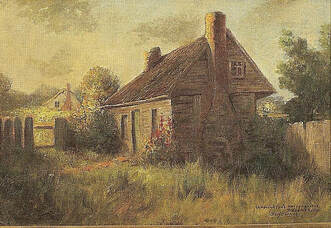 In 1745, Dulany assigned a group of commissioners to design the new western town. They wanted Frederick Town’s streets to run toward the cardinal points. There was already one road going through the new town, running from Pennsylvania to Virginia. This became known as Market Street, because a market would be established here. Another major street would intersect this road north of the Carroll Creek which it paralleled. This would receive the moniker of Patrick Street by the town founder, said to have been done to honor a prominent cousin, Dr. Patrick Dulany, a famous reverend and theologian living in Ireland. The new town was divided into 166 lots, laid out primarily north to south, with sizes ranging from 60 to 63 feet wide and 355 to 395 feet deep. The few people who bought their own lots paid two pounds, 10 shillings (about $3.20) with an annual ground rent of one shilling (roughly $.25) for 21 years and two shillings a year thereafter. A majority of residents leased lots, paying Mr. Dulany a quit rent of a shilling sterling. Frederick Town arose as the Maryland colony's first planned unit development. Daniel Dulany had a vision for his town and had to overcome challenges of being positioned in the backlands of the colony, while not having a navigable waterway. Regardless, he specifically began a unique marketing strategy of recruiting German immigrants from Pennsylvania and Europe. Dulany also started attracting English coming up from southern Maryland and the tidewater area of Virginia, looking for a new place to conduct business. The developer’s goal was to create a major trading market on the western frontier of the time. “Out of the Reach of Oppression” Early German settlers included the names of Brunner, Shellman, Kemp, Raymer, Grosh, Fout, Houck, Holts, Reich, Bentz, Brengle, Mantz, Conradt, Young, Kolb, and Getzendanner. These people had fled from the oppressive restrictions of their homeland to seek a refuge here for themselves and their families. They brought with them their language, culture, and industry. Another German family who made the long overseas journey was that of John Thomas Schley who history books claim built the first house in town in 1746 on East Patrick Street and Stein Alley (today's Maxwell Alley). This log and stone structure was two-stories high and had a gabled roof. Schley came to America for religious reasons and was the leading member of the German Reformed congregation in this new settlement. In 1748, Schley and his congregation built a log church on a lot that ran between West Church and West Patrick Streets donated for the purpose by Daniel Dulany. Frederick's founder donated lots to multiple congregations as he knew that these would serve as the centers of religious, educational and social life for these settlers living on the western frontier at the time. One of the area’s earliest settlers, Jacob Steiner, or Stoner (1713-1748), was one of the six men who tried to buy “Tasker’s Chance” in the late 1730s. Of the 19 individuals who initially received deeds from Dulany in 1746, only Steiner received more than one parcel. He held three lots, all located northeast of the newly laid-out town. Steiner operated a mill near the mouth of the Tuscarora Creek and named his lands “Bear Den,” “The Barrens,” and “Mill Pond,” the latter on which he erected a late medieval-style stone and timber dwelling. The ruins still stand amid the Worman’s Mill community. Steiner built the town’s first brick structure and later it was used as a tavern. The two-story building sat on the southwest corner of the village square at the intersection of Patrick and Market streets where Colonial Jewelers is today. One more immigrant of note to speak of was Joseph Brunner, who, with his family, immigrated to America in 1729 from a home in Schifferstadt (near Mannheim) Germany. The family landed in Philadelphia and eventually arrived in Maryland by 1744. Brunner bought 303 acres of land from Daniel Dulany for 10 pounds in 1746. He named his tract “Schifferstadt” after his native home. His son, Elias, completed a stone house on the property in 1756 which still stands today and serves as a unique architectural museum. It typifies German colonial architecture with two-and-a-half foot-thick walls, hand-hewn oak beams, exposed half timbering, and cross-and-bible doors with highly wrought elbow locks and hinges.  Daniel Dulany promoted his growing town by sending advertisements to Lord Baltimore, who in turn circulated these in Germany. In these inducements, Dulany used the immigrants who had already settled in Frederick Town to give glowing testimonials about his land and good will. The Germans greatly influenced early Frederick where the native language was more commonly spoken here than English. The style of houses and barns built also reflected German craftsmanship not English. Together with English and Scotch-Irish immigrants, the Germans forged the foundation of the small, land-locked village 40 miles from the nearest port. Some may have expected that the varied interests, habits and prejudices of these different cultures would have kept them apart. This was not the case as these pioneers found themselves in a wild country living near sometimes hostile Indians. The settlers faced all the difficulties and the dangers of frontier life. In spite of this, Frederick Town became a thriving community, attracting many tradespeople, including weavers, tailors, shoemakers, blacksmiths, and wheelwrights.  Maryland Gazette (Dec 14, 1748) Maryland Gazette (Dec 14, 1748) A New County At the time of its founding, Frederick Town was part of Prince George’s County which, along with Anne Arundel and Baltimore counties, encompassed most of the Maryland province’s western shore. With increased immigration to inland areas, the residents of western Prince George’s County petitioned the provincial government to form a new county. In 1739, Benjamin Tasker introduced the first bill to create a new county. After nine consecutive, annual attempts, the proprietary government agreed for Daniel Dulany’s fledgling village to serve as the county seat, helping to bring additional value and prestige to his planned community investment. Frederick County was formed by a legislative act on December 10th, 1748 and included the entire western part of Maryland. A county court system was established here in Frederick Town with sheriffs and justices of the peace. A courthouse and jail would be built. The commissioners purchased lots 83-88 from Daniel Dulany in 1750, today this serves as the site of Frederick's City Hall. Travel Crossroads Frederick Town’s remoteness forced it to become an independent town from the beginning. Travel was difficult and distances great. The earliest settlers built their own farms and houses and provided for all their own needs. As Frederick Town grew, more craftspeople settled here to provide services and supplies to the residents. Tailors, scriveners, jewelry makers, printers, hat makers, and tanners were among the leading businesses found in town. Many rented, while some owned these examples of Frederick Town’s earliest commercial real estate. The main thoroughfare to and from various colonies passed through Frederick. In a few years, a public road was built from Frederick to Annapolis. The town became a stopping place for weary travelers. To accommodate the many visitors, taverns were built along the route. During this period, Annapolis was an important trading port and the road from Frederick was used by area residents to haul tobacco and flax to the shipyards. Frederick Town expanded rapidly, soon becoming the second largest town in Maryland, an honor it continues to hold today. Thanks to British Gen. Edward Braddock’s ill-fated mission during the French and Indian War, the first road west had been established and carved out to Cumberland. This later would become the National Pike, utilizing Frederick’s Patrick Street. Years later, during the American Revolution, a British military member wrote of this unique residential and commercial setting in his journal: "Frederick Town is a fine large town and has a very noble appearance as the houses are mostly formed of brick and stone, there being very few timbered buildings in it; it contains near 2,000 inhabitants, chiefly German." -Lt Thomas Ansburey, 1778 The community continued to grow as the new country further formed itself following the American Revolution. As for realty pursuits with issues such as land and home sales, transfers, building, etc., people were traditionally selling and buying on their own accord with official documentation being approved and stored at Frederick County’s courthouse. Sometimes a lawyer was involved, sometimes not. Regardless, it continued to be a good place to be if one was in the legal profession as the seat of county government and considering the abundance of court transactions necessitated in a large county brimming with growth. More villages had sprung up around the county and served as centers for farm shipping and markets for the surrounding countryside. Along the National Pike, Middletown gives its founding date as 1767 and New Market was laid out in lots in 1793. Libertytown arose in 1782 along the Liberty Road. In northern Frederick County, Emmitsburg came to be in 1785, and Mechanicstown (later named Thurmont) came in 1803. To the south, a gentleman named Leonard Smith would be responsible for laying out two more locations: Jefferson in 1774 and Berlin (later named Brunswick) in 1787. Buckeystown dates from the 1780s on the early land grant of Carrollton Manor. The 1800s The turn of the century came in 1800 and in a little more than 50 years since Frederick Town was founded, the village had quickly grown from a cluster of settlers into a thriving community, drawing the attention of prominent visitors and politicians. Its residents, mostly hardy German immigrants, rose above an unfriendly environment, so far away from a trading port. It had begun as a place of dense woods and wild animals, not to mention the residents having to endure early threats of Indian attacks and two major military threats with European foes, with a third to come in 1812. Frederick Town became an incorporated city in 1817, and the county continued to grow as the National Pike further took form. Settlers and goods made their way to, and through, town in directions east to west and north to south. The Baltimore & Ohio Railroad arrived here in 1831, as did the Chesapeake & Ohio Canal.  Early image of the B&O with open air passenger cars Early image of the B&O with open air passenger cars Settlers and goods made their way to, and through, town in directions east to west and north to south. The Baltimore & Ohio Railroad arrived here in 1831, as did the Chesapeake & Ohio Canal. Both entities gave rise to the previously mentioned Berlin, and another hamlet on the Potomac River that would take the unique name of Point of Rocks. Later in the century, train activity shaped Ridgeville, (eventually renamed Mount Airy in 1894) and further advanced Thurmont in terms of trade and tourism, as a cool-air, mountain retreat. Daniel Dulany's community turned 100 in 1845, a time of renewed building with unique public structures such as churches and schools, and additional floors or amenities to residential buildings. In this latter case, some original dwellings were replaced with modern architectural designs. Some of the other towns of the county would become incorporated during this century and further refined through progressive means. A brief, but major, interruption came mid-century with the American Civil War. Residents saw large armies come through hometowns, and in some cases experienced camping regiments, skirmishes and battles. A return to normalcy would eventually take place, and agriculturally based, light industry evolved further in the form of leather tanneries, sanitary dairies, canning companies and fertilizer and limestone works. Iron manufactories, a knitting mill, brickworks, and a major brush company would eventually arise here. In addition to farming, blue collar and professional jobs were available, and homes were certainly needed to house these individuals. Community building continued to grow in earnest thanks to churches, fraternal organizations and benevolent charities. In the City of Frederick's overview history by Diane Shaw Wasch and found on the City's website, the author states: "Plans for residential development beyond the established city grid began with the platting of Clarke Place on the south end of town in 1894. The plan for Clarke Place was a sign of the suburban development that would take hold in the early twentieth century, with large single houses on lots with deep setbacks from the street. Adopting the Late Victorian and Colonial Revival architectural styles, which emphasized larger individualized building forms, these houses signaled a distinctive new appearance in Frederick architecture. West of the city grid, street extensions shown on the 1897 Sanborn Fire Insurance Company map reveal significant plans for future subdivision. The end of the nineteenth century saw a renewed energy in Frederick’s development. The city was well established with thriving agricultural markets, particularly the emerging dairy market, as well as a diversified light industrial base, and a growing number of wealthy citizens associated with the railroads, business, and legal community. City streets were paved and lit with electric lights, and telephone service was available to city residents. The century’s end was punctuated with the formation of a hospital organization, dedicated to the construction of a state-of-the-art hospital on the north end of town, and the establishment of an inter-urban railway system that eventually connected with Emmitsburg to the north, Jefferson to the south, and most importantly, the railroad hub city of Hagerstown to the west." Real estate was bought and sold, sometimes with just a handshake. More often, a special professional's help became more and more desired to assist the home, or business, seller. Of course, many sellers sought a lawyer's counsel to consummate the deal, but there were those who prided themselves of being specialized salesman of dwellings and possessed the monetary means and connections to help gain loans or mortgages for would-be buyers. The profession of real estate broker began around 1900 here in the United States. The initial home sale records began here around 1890. There was actually an attempt to create the first real estate association in the country at this time, however, the effort failed. This exercise did help set a base for the process for later. There would be few, if any, set rules about who could work as a real estate broker. Hence, there were no licenses or professional certifications to become a registered broker, leading to dubious practices with many engaged in this line of work known as "curbstoners." Anyone could place a sign on a property to sell the house, creating a sort of “wild west” in real estate. This led to “curbstoners” placing signs in front of homes to compete amongst themselves and mortgage brokers, with the seller having to randomly pick a sign in which to help sell their house. 1900s Hometown USA While Frederick may have prospered near the end of the 1800s, the first 50 years of the next century would be one of slow growth. Some historians have described Frederick as a “sleeping giant” during the first five decades of the 1900s. Frederick still had the largest land area of any county in Maryland, but by 1920, Baltimore, Allegany and Washington Counties would exceed it in population. Many industries eyed Frederick as a potential business site, but town officials made no serious attempt to lure companies here. Therefore, the economy remained at a steady, if not declining pace, for the first half of the 20th century. Research shows that some of the older families and leading citizens of Frederick thought their peaceful town in western Maryland may be growing a little too fast for their tastes. There was a fear of too much industrialization, or dirty factories, coupled with the opportunity for railroad interests and trade unions to gain power from those whose forefathers braved the former trials of frontier existence. Other social influencers simply wanted to remain “big fish in a small pond.” Steps by some leading, local citizens appear to have been taken in discouraging major industry to locate, or build, here. Frederick simply remained known for its abundant farming efforts and possessing the oldest railroad depot in the United States, but certainly not the busiest. Two railroads came through Frederick County, but Frederick City was simply more of a terminus of spur lines as the railroads were never fully embraced. One could easily see the the growth and change brought with railroad and its influence on major industry in the nearby towns of Hagerstown, Martinsburg and Cumberland. All three places fast outgrew Frederick in population, along with economic and industrial prestige. Frederick would, however, incur considerable change in another way. Transportation innovations would help spark suburbanization. The advent of the automobile was key to this change currently sweeping the nation. Frederick (city and county) would also receive its own trolley line in 1896 which accelerated suburban and interurban activity. Into the 20th century, this form of mass transportation would link Frederick City to the Middletown Valley and Hagerstown to the west, and another trolley line would connect points north en-route to Thurmont from Frederick. Farmers could ship produce and milk to Frederick with greater ease, and necessity goods and items could be sent to those living in rural areas from the commercial seat of the county. While industry lagged, living amenities were enhancing the lives of Frederick residents. Perhaps this was the genesis of Frederick’s standing later in the 20th century as a bonafide “bedroom community.” A common constant was that Frederick would be seen as a great place to live and raise a family—a true “Hometown, USA.” Stately neighborhoods would begin to take shape in Frederick City as large homes began being built and pushing city limits outward. Referenced earlier, a row of thirteen homes along Clarke Place were constructed in 1894, exemplifying all the characteristics of the Victorian and eclectic eras of architecture. Located in the south end of downtown Frederick, off South Market Street, the development was built to front the newly built Maryland School for the Deaf, which occupied the former grounds of a barracks facility built at the time of the Revolutionary War. The unique neighborhood took the name of Clarke Place after local native, Gen. James C. Clarke—a past president of the Chesapeake and Ohio Canal and several railroads including the Illinois Central Railroad. This area represented a new trend in the history and development of Frederick’s home design as most earlier examples fronted on the public sidewalk, featured a rear yard, and were two or three bays wide. According to Frederick City Planner, Christina Martinkosky: “The new neighborhood was unique in that it was the second planned extension to Frederick since the city was initially platted and the first not to mimic the long, narrow lots that typically define downtown Frederick. Instead, the development features wide lots that influenced the character of the neighborhood in several ways. It allowed for the construction of homes with large proportions and architectural features that were popular during the Victorian and Eclectic eras including front porches, projecting bay windows and towers. The generously sized lots allowed the large homes to be setback from the street and feature rear and side yards. In fact, deed restrictions on each property required that the new homes be set back 50 feet from the street and prohibited the construction of “double-houses” or offices. Over time, the neighborhood was built with homes designed in the Queen Anne and Colonial Revival styles, which were popular at the time and featured grassy lawns planted with Norway maple trees.” The area was previously part of farmland owned by Dr. Bradley Tyler and purchased by the South Park Villa Company, founded by Dr. Joseph A. Williamson, Harry W. Bowers, and Willard C. Keller. The homes along Clarke Place served as a precursor to the suburban development that would take hold in the early 20th century, featuring large, single-family homes on lots with deep setbacks from the street. Another example to follow included luxury housing being built on the northside of the 200 block of East Second Street. In 1903, the Jesuit Novitiate across from St. John’s Church was torn down. On this site, a handful of large homes were constructed. As trolley lines enabled people to move from the center of town, some relocated to Rockwell Terrace, a suburban development laid out and recorded in 1905 by local businessman Frank C. Norwood. Named after Elihu Hall Rockwell, former educator and native of New England, Norwood obtained the namesake’s property and house fronting on North Bentz Street at the head of West Third Street from a descendant. Mr. Norwood would move the house, thus opening West Third with a continuation thoroughfare he would call Rockwell Terrace. This area soon became the most desirable location in town, as the new neighborhood would be built under the leadership of Norwood and the West End Realty Company. To the west of Frederick, Braddock Heights was a byproduct of the trolley system as its parent company, the Hagerstown & Frederick Railway, built an amusement park atop Catoctin Mountain here. The location quickly grew as a resort for summer living. Attracted by the lush mountains and quiet atmosphere, prominent families and others, many of which had homes in downtown Frederick, built spacious cottages here that would capture fresh, mountain air and afford sweeping views of both the Frederick and Middletown valleys. Lewis Henry Dill (1821-1894), son of Joshua and Mary Dill, eventually came to own the property north of today's Dill Avenue and across the street from Frederick's first Presbyterian Church and graveyard. Mr. Dill's father was an innkeeper and War of 1812 veteran. Lewis lived on the northwest corner of N. Bentz Street on what was called (during his lifetime) the Almshouse Road, and eventually Montevue Road as it departed W. Fourth Street and headed in the direction of the former county home for aged and needy citizens. The street was also called the New Cut Road and Fourth Street Extended as well. The permanent renaming wouldn’t come until August, 1901 when Frederick alderman John Baumgardner suggested the name of Dill Avenue to replace the W. Fourth Street Extended moniker. It was duly accepted, and the rest is history. As for Lewis Henry Dill, he made his living as a farmer and large landholder. The College Effect The former Women’s College of Frederick announced plans in 1911 that Mrs. Margaret Hood had donated a parcel of land to the female learning institution for use as a new campus. This locale had once been known as Groff Park, home to a shooting club known as Deutsches Schuetzen Gesellschaft Park. This was a social and stock endeavor formulated by leading German-descended residents. Present-day Brodbeck Hall (on the campus of Hood College) served as the clubhouse for the group, which came complete with an old-fashioned beer garden to accommodate stockholders. The Civil War and lean times caused financial woes that the club could not rebound from, and apparently Capt. Joseph Groff, a local hotel keeper, purchased the locale. Hood College moved from its previous location on East Church Street to a new campus on the northwest part of town in 1913. This area was now destined to expand even further beyond Rockwell Terrace, truly the most desirable residential location in the city, away from the sights, sounds and smells of industry and trains primarily located in the southeast part of Frederick, containing the tanneries, grain mills, packing plants and canneries. Existing homes bounded Dill Avenue, an extension of West Fourth Street west of the intersection with North Bentz Street. The Zimmerman Farm was located to the immediate west of Mrs. Hood’s donated land for the college. Ninety acres would be purchased by local attorney Harry G. Tritapoe and business partner Eugene Sponseller. These gentlemen would lay out, and sell, building lots here in 1913. This subdivision would take the name of the former poultry farm --"Rosemont." Montevue Avenue would soon after take the name of the venture—Rosemont Avenue. Two gentlemen of particular interest in the Rosemont story are Elbridge F. Biggs and John M. Culler, who jointly bought eight building lots here in 1913. Their purchase constituted the entire 1st block of Fairview Avenue, north of Rosemont Avenue. Meanwhile, to the east of the immediate campus, fine homes began being constructed on the extension of West Fourth Street immediately next to the proposed campus and along Elm Street. This newly created street led to a new public school that would take the thoroughfare's tree-themed name. There had been some residential building activity on the east side of town already. Hamilton Street, across from the fairgrounds, and a few other lots in this vicinity had popped up on the old eastern entryway into town. East Fifth and East Sixth streets experienced residential growth as would North Market Street. The place to be, however, was the in the northwest part of town in proximity to Rosemont (Montevue) Avenue. Soon after Rosemont lots began being sold, other neighbors in this vicinity would “give up the farm” so to speak, allowing additional plans for development around the new education center of Hood College, which opened in 1913. Farmland would be purchased and soon gave way to two future subdivisions: “Villa Estates” and the aptly named “College Park.” Controversy erupted among some locals because this was being orchestrated by an outsider named Edward L. Williams from Martinsburg, West Virginia. He called his company “Swastika Realty." Some residents of Rockwell Terrace, along with local businessmen and others were outraged at this perceived “carpet-bagger” subtly challenging Frederick’s resident “big fish.” The neighborhood coined as “the Residential Showplace of Frederick” was now being challenged for supremacy by a new one, initially touted as having “the most picturesque views in the city.” Villa Estates was announced in late April of 1913 as being unique for having country style lots in which they could "have a lawn, chickens, a garden and fruit trees." Interested buyers were enticed by free trolley ride vouchers placed in the newspaper to encourage a visit to learn more. From the outset, Villa Estates, would be delayed and hampered by slander and blockages to a water supply, thanks in part to the current mayor and board of alderman. This became a major problem over the next year as Mr. Williams had been rejected by the city fathers after ten attempts to obtain water. A compromise came with a change of administration as Lewis Fraley won the mayor’s race in late 1913 and worked with his Board in the new year upon taking office. The necessary supply was allowed by summer of 1914. College Park had its own opposition as well as already stated. To combat sentiment, Mr. Williams hired noted landscape architect George Burnap to provide the architectural design, if approved. Mr. Burnap helped design areas of New York’s Central Park and was also responsible for Hagerstown’s City Park among many others. He worked as a landscape architect for the Office of Public Buildings and Grounds in Washington, DC between 1912-1917. His work in the nation’s capital includes Meridian Hill Park and the White House’ West Garden. A contentious meeting held at City Hall in early September 1913 resulted in the Frederick Board of Alderman giving the ultimate green light to this project. Soon, luxurious houses began being built along West Third and Fourth streets, west of Rockwell Terrace. Mr. Burnap employed a design of angled lots radiating around a central parcel shaped in the form of a heart. This particular “heart” plot would become Schley Park, named in honor of Frederick’s Admiral Winfield Scott Schley, a naval hero in the Spanish-American War. The Rosemont subdivision was the local challenger to Mr. Williams’ projects. Not as professionally handled as its rival subdivision projects, an advertisement appeared in spring of 1914 announcing an auction of 50 lots in this section north of Rosemont Avenue. This occurred just prior to the water approval for Villa Estates and was put on by the American Realty and Auction Company of Greensboro, North Carolina. Of note, gimmicks were used here in offering a free lunch which was a great incentive, but not more than the promise of $10 in gold for “the automobile owner who brings the largest number of white grown-ups.” The sale signified the future need for more scrupulous real estate practices. Mr. Williams clearly felt the wrath of his rivals and now wisely looked toward well-rooted local professionals to sell on his behalf. Beginning in May 1914, a new realty firm put up their respective shingle. This was Potts & Griffin. Two years later, this tandem began selling lots for Mr. Williams and the College Park Real Estate Company. New development plans would be slowed in the years of 1917-1918 due to World War I, but normalcy returned after the signing of the Armistice peace treaty in November 1918 and return of local soldiers in early 1919. Businesses flourished, and suburban residential development commenced as the period labeled “the Roaring Twenties” would soon take hold. Walker Neill and John J. Joliffe would purchase "Villa Estates" and take over sales here in 1919. Another gentleman named John N. Clary could be found selling lots in all three new subdivisions (Villa Estates, Rosemont and College Park) located northwest of town. Mr. Clary was a veteran in the industry with experience dating back to the previous century. Luckily the heated rivalry and real estate version reminiscent of “the Hatfields & McCoys” would end for not only the good of the community, but more so for innocent would-be buyers. The trolley, or Hagerstown & Frederick Railway, would change its name to the Potomac Public Service Company in 1922, and shortly thereafter to the Potomac Edison Company. Electricity and indoor plumbing were life-changing amenities. Homeownership would become further re-imagined. Frederick remained a peaceful city with tree-lined streets and devoted citizens working toward public improvements. The same held true with the smaller towns and villages throughout the county. This was a special place, and the year 1922 marked the start of a real estate-based organization whose timing was perfect for residents, old and new. Frederick was also a unique location to serve and accommodate visitors. Some were here on business, others here for pleasure, while many folks were just passing through en-route to some other destination by automobile. Regardless, it was hard not to be impressed with the look and feel of Barbara Fritchie’s town of “clustered spires, green-walled by the hills of Maryland.” The principal hostelry of town, the New City Hotel, was razed in early 1921 to make room for a new hotel. Under the leadership of local businessmen such as Charles McCurdy Mathias, Sr. and Col. David John Markey, a luxurious, six-story establishment would soon carry the name of another one of Frederick’s leading historical figures, Francis Scott Key, writer of “the Star-Spangled Banner.” The hotel would be built in 1922 and opened the following January. The facility was a “state of the art” amenity for its time and helped further proclaim the importance and potential of a community steeped in rich history and the American experience. Building in, and around, Frederick was booming. The controversies tied to the Villa Estates and College Park projects in allowing outside interests to dictate municipal policy was a great impetus to having “home rule” through and through. As stated earlier, this was the same reason the railroad wasn’t embraced nearly a century earlier. However, many saw that the unscrupulous practices of some locals, if left unchecked, could also have devastating effects on the future of a growing town originally began as a planned community on the colonial frontier of Maryland. Now was the perfect time for leading local land brokers to establish a formal Real Estate Board for the very first time. This would occur in February 1922. ***Be sure to check out parts 2 & 3 of the centennial history of Frederick County Association of REALTORS® (Click below)
|
AuthorChris Haugh Archives
February 2024
Categories |
Proudly powered by Weebly




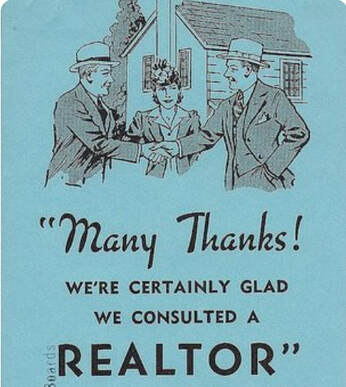


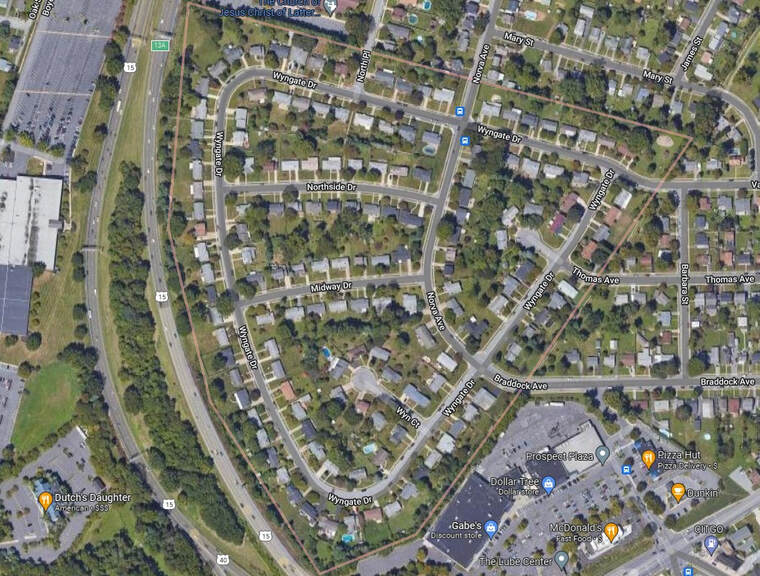


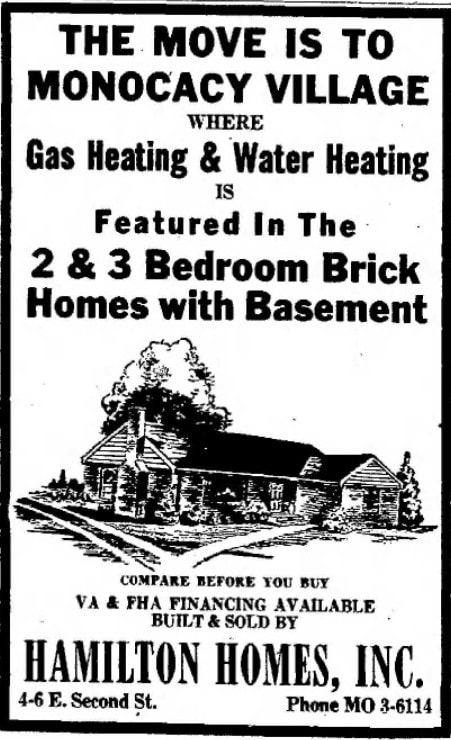





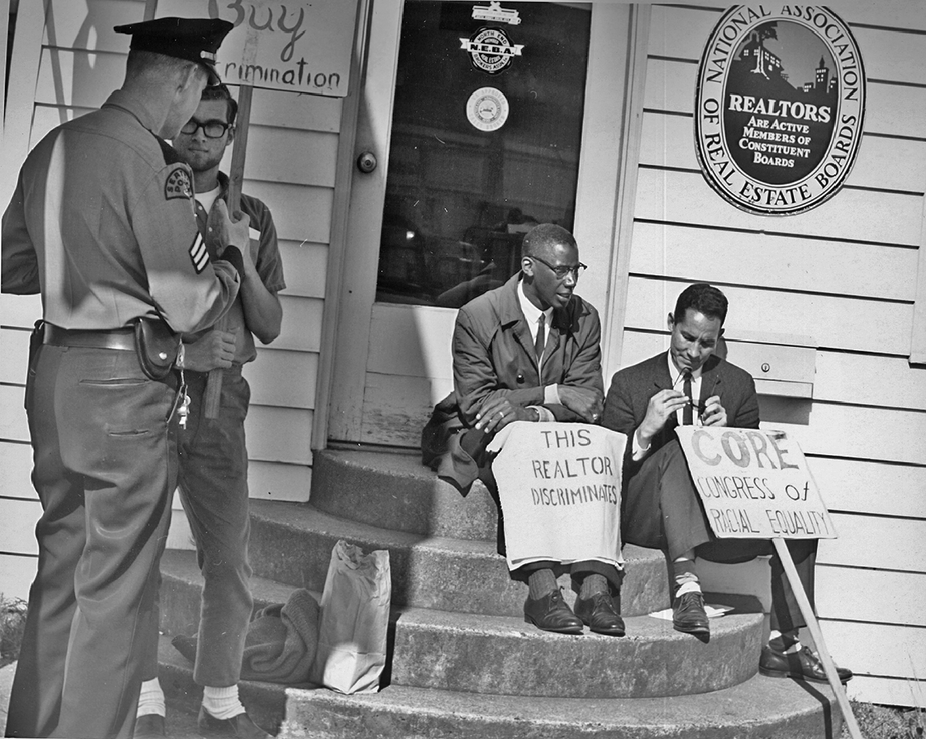



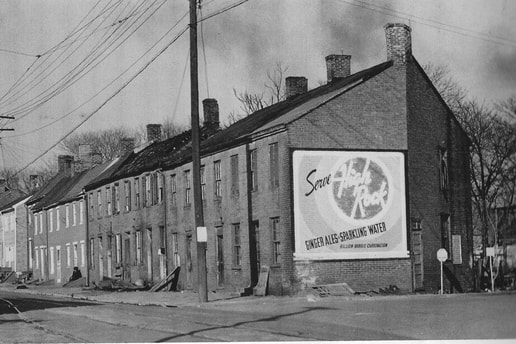

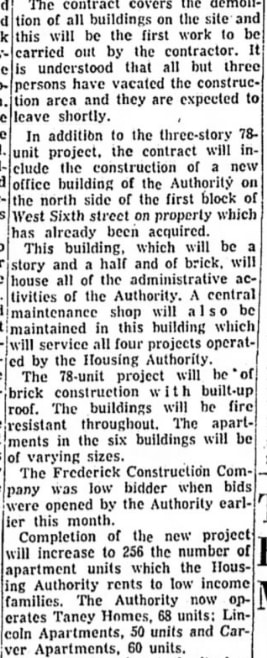






























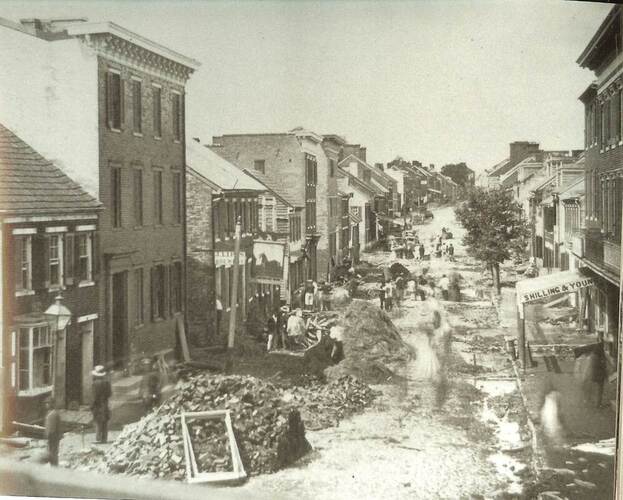

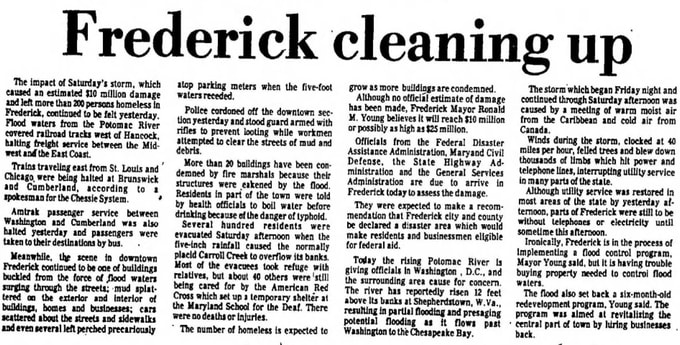

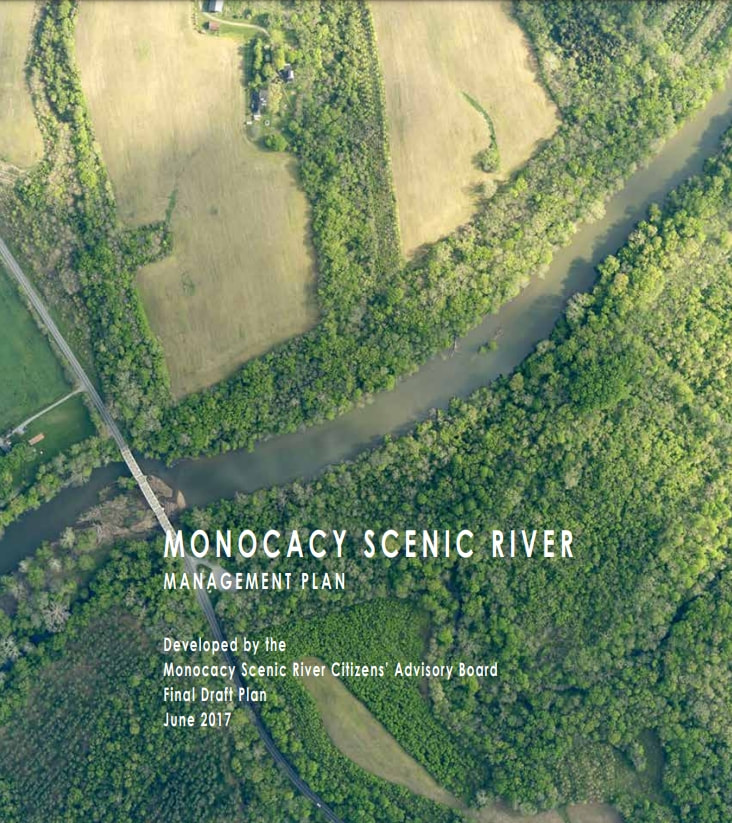




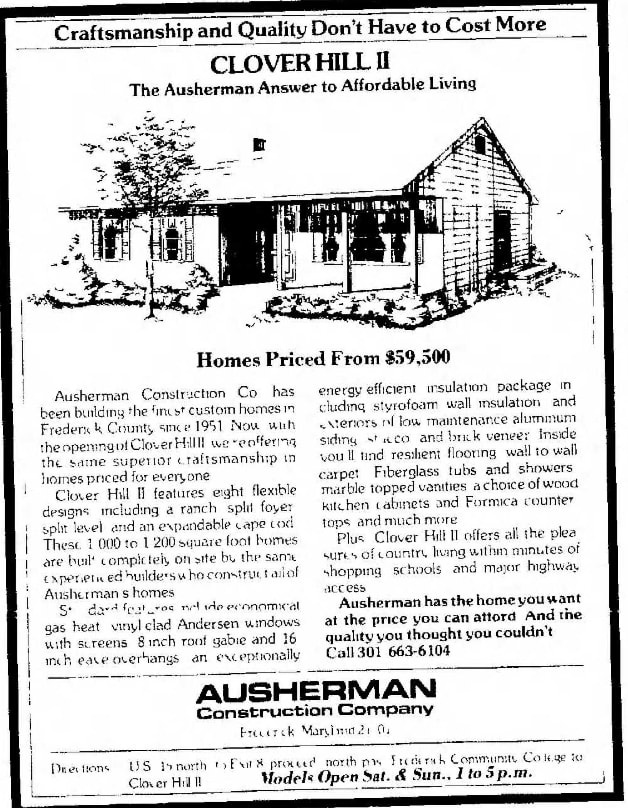

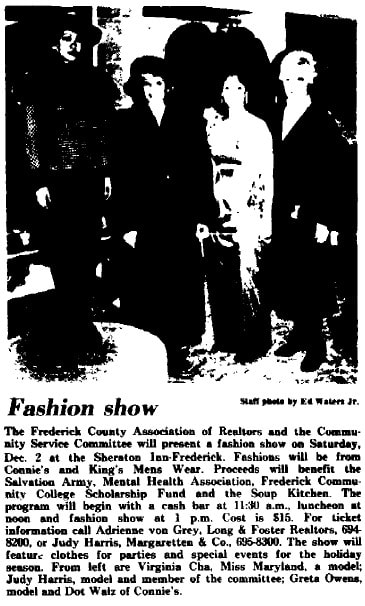


















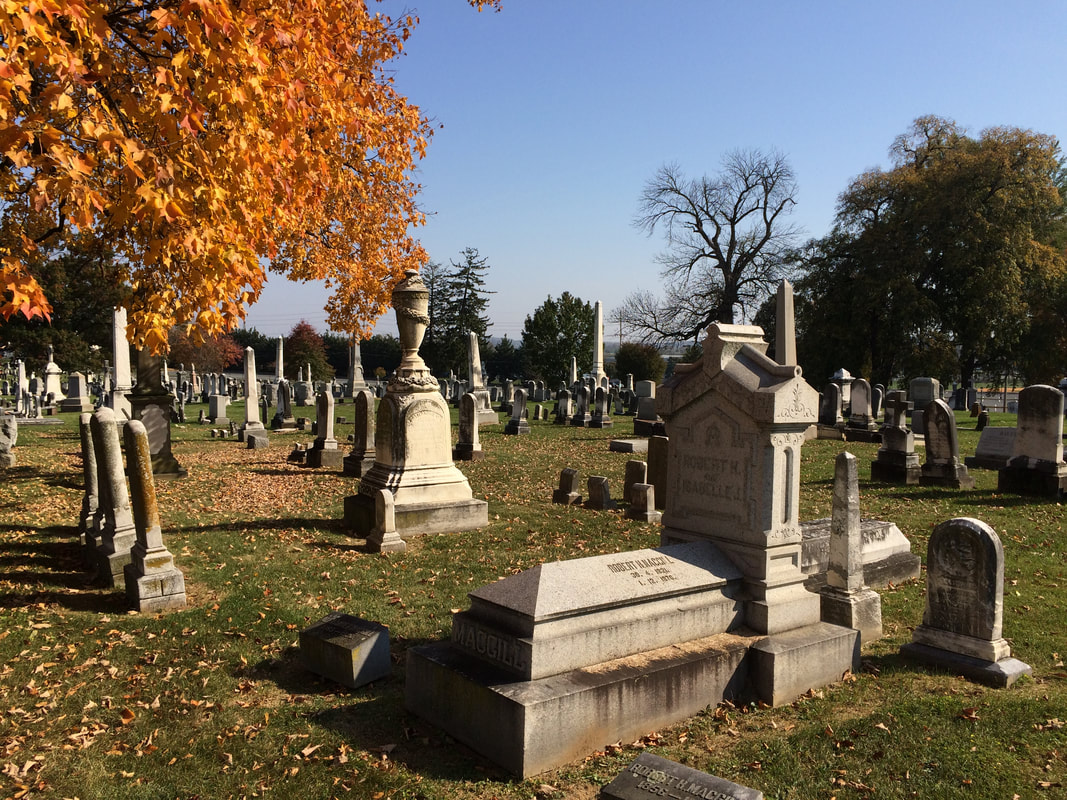


















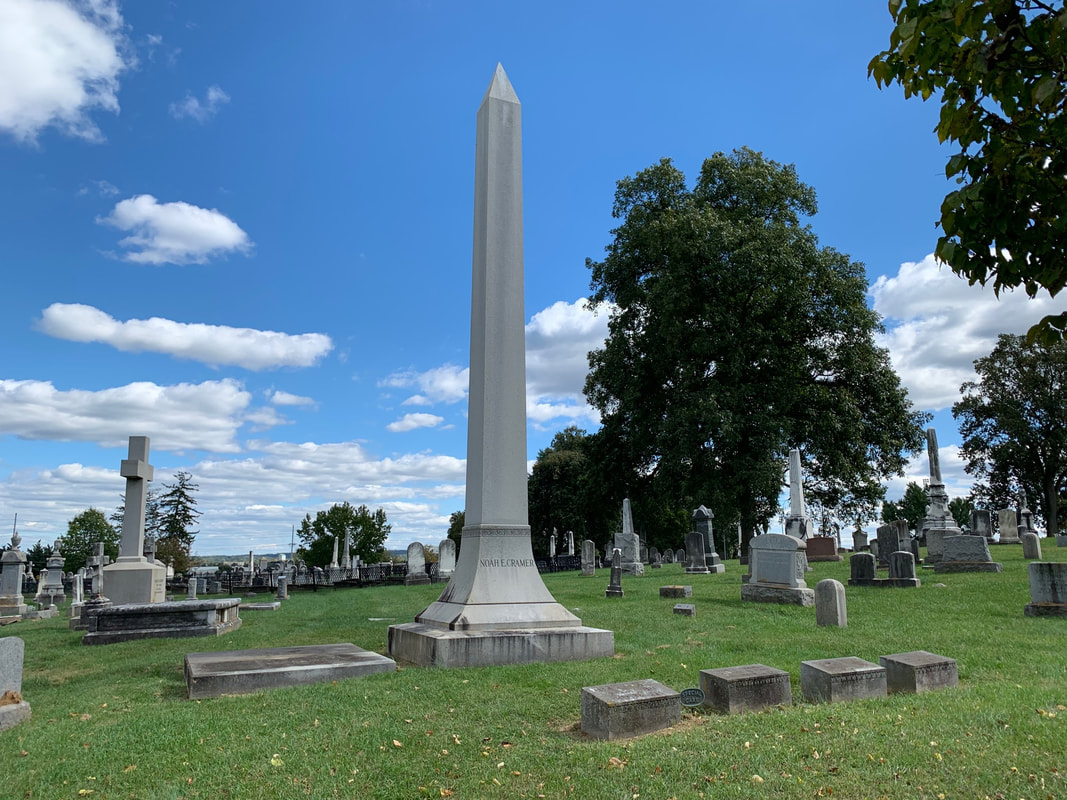










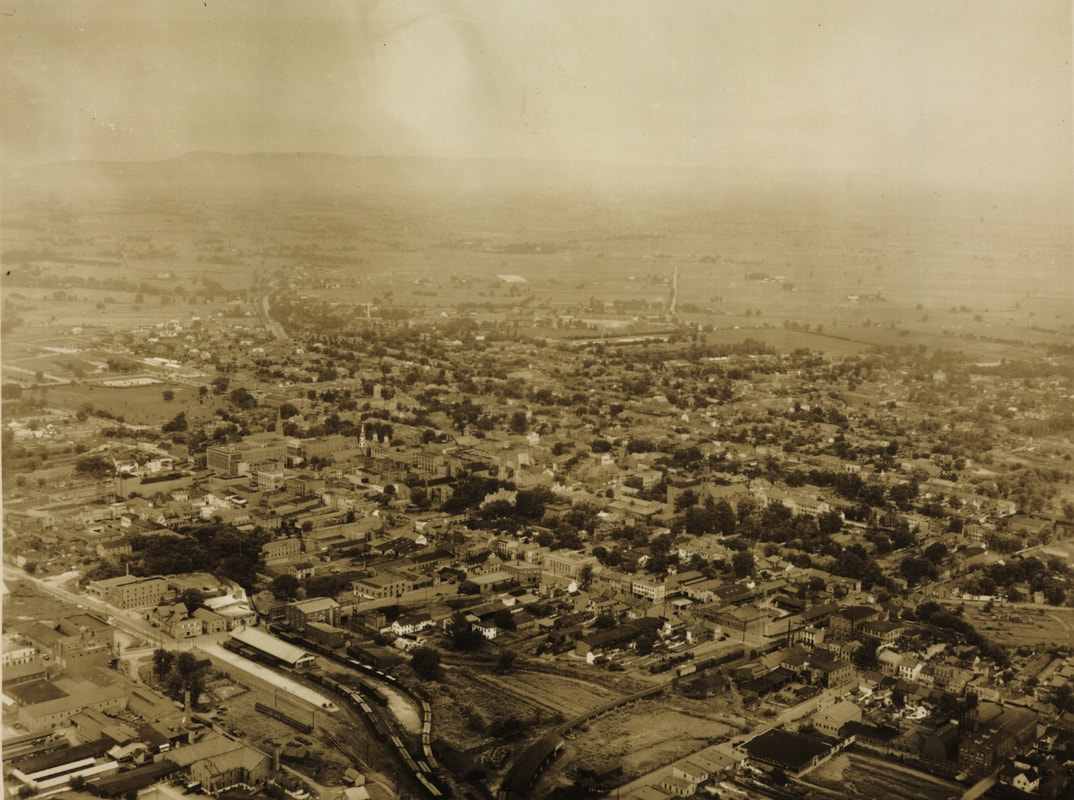






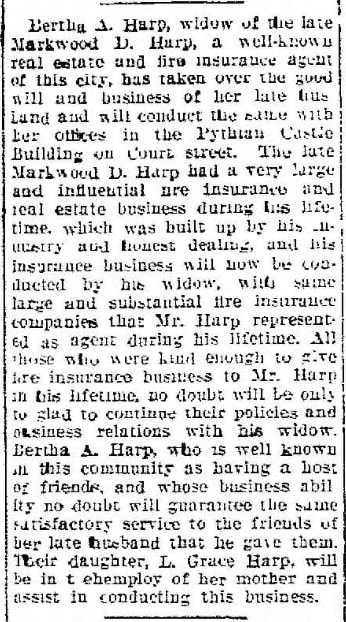







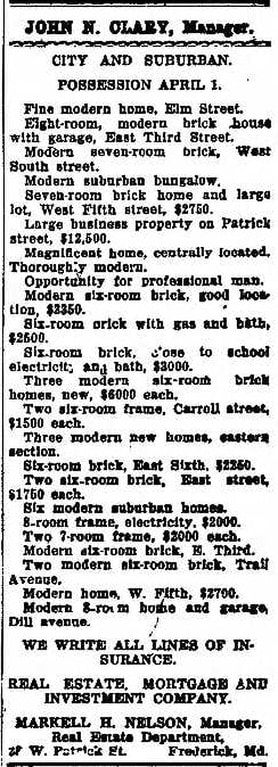
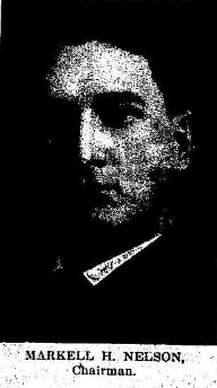







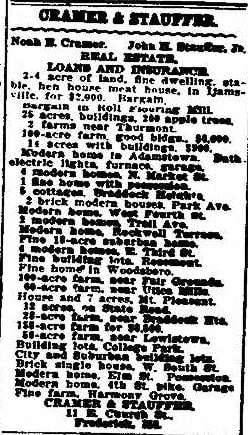





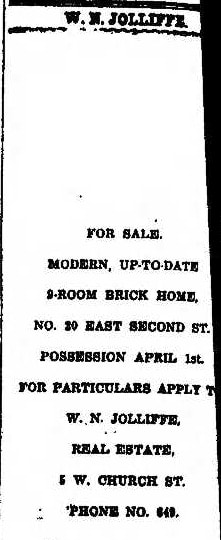



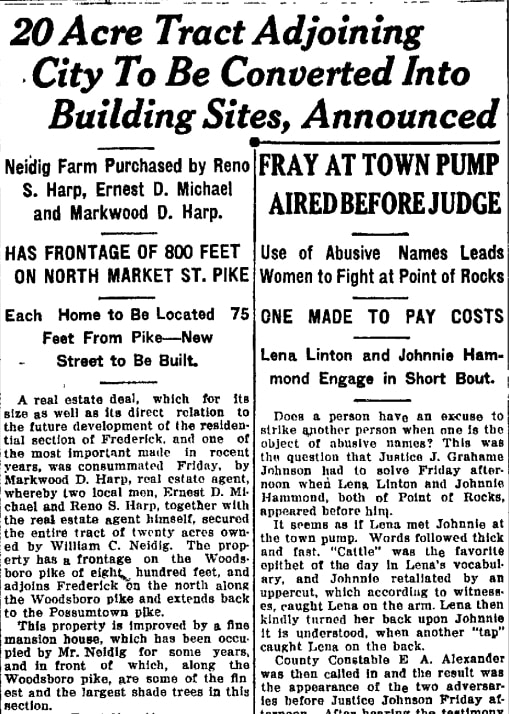



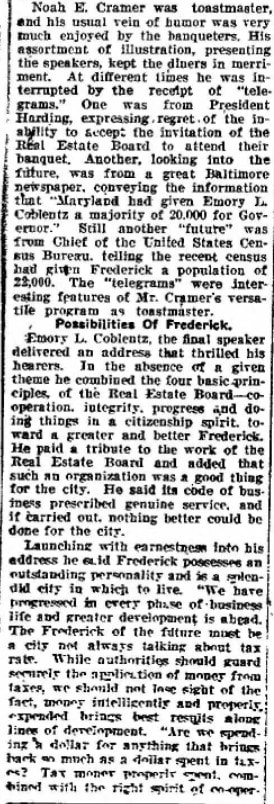





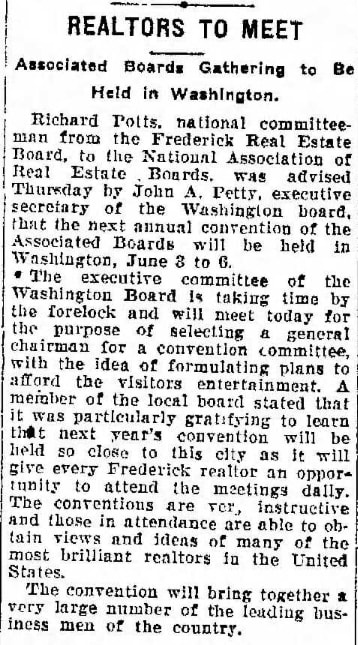












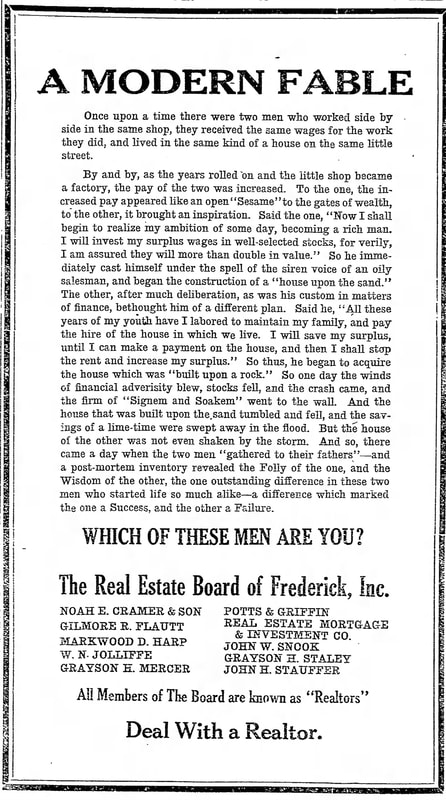




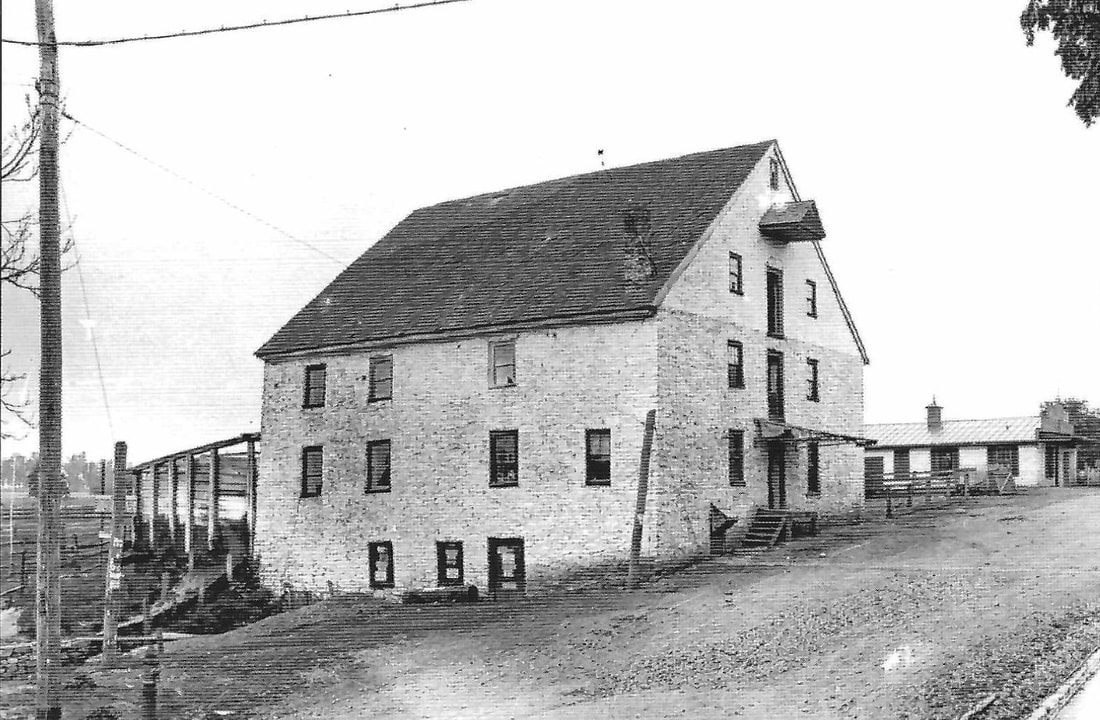



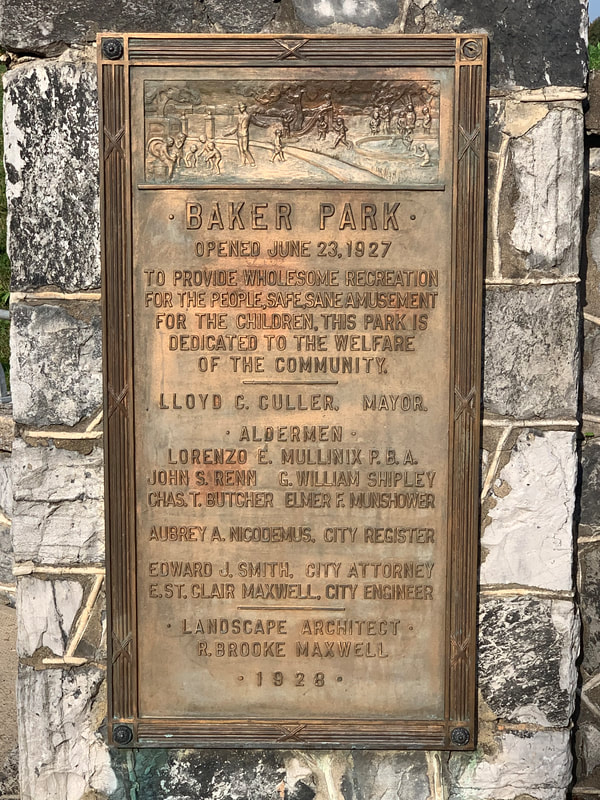

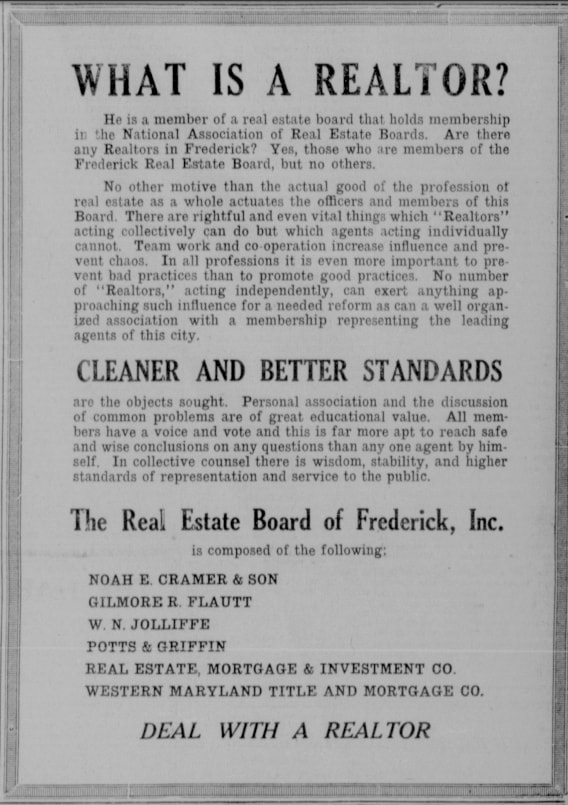

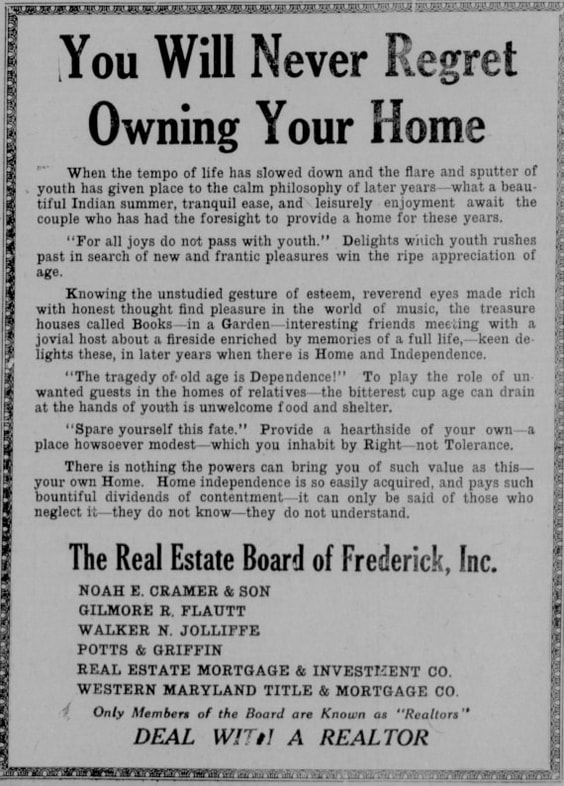








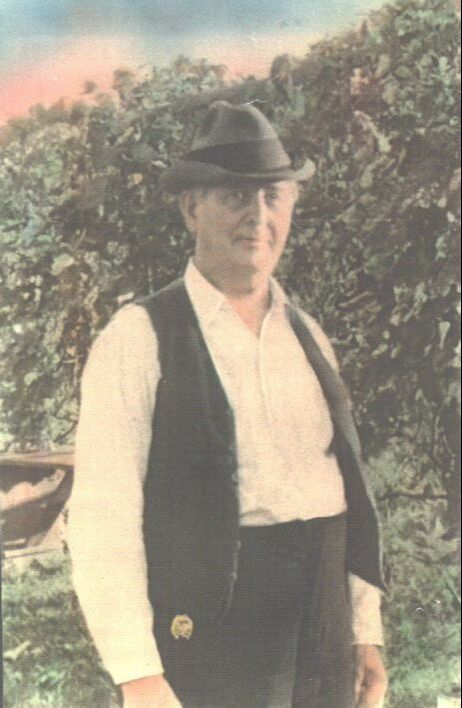

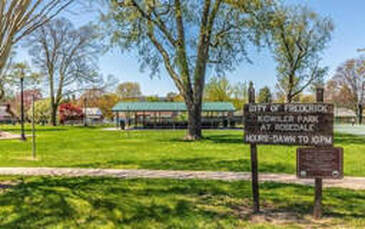




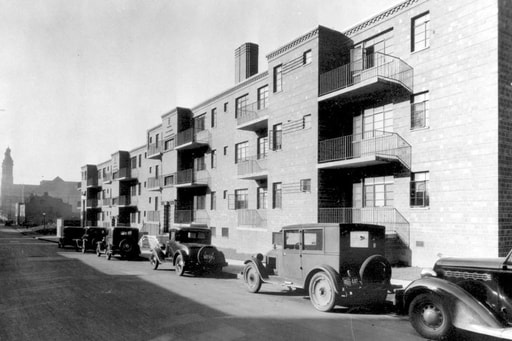



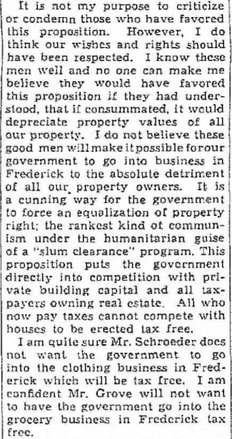
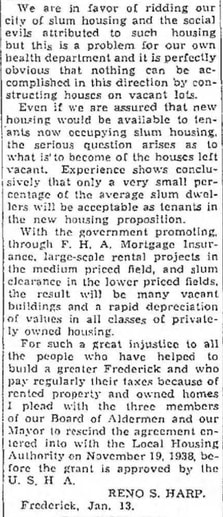
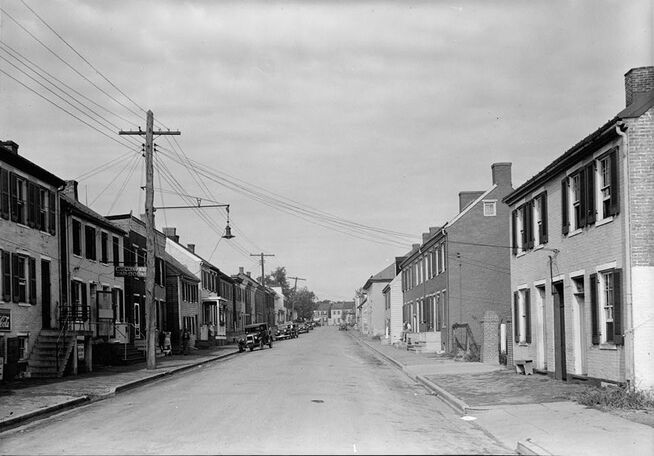

















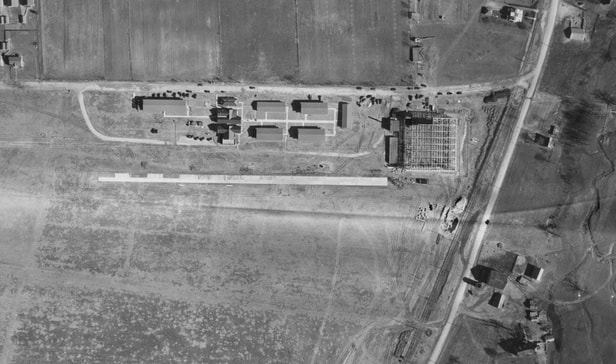





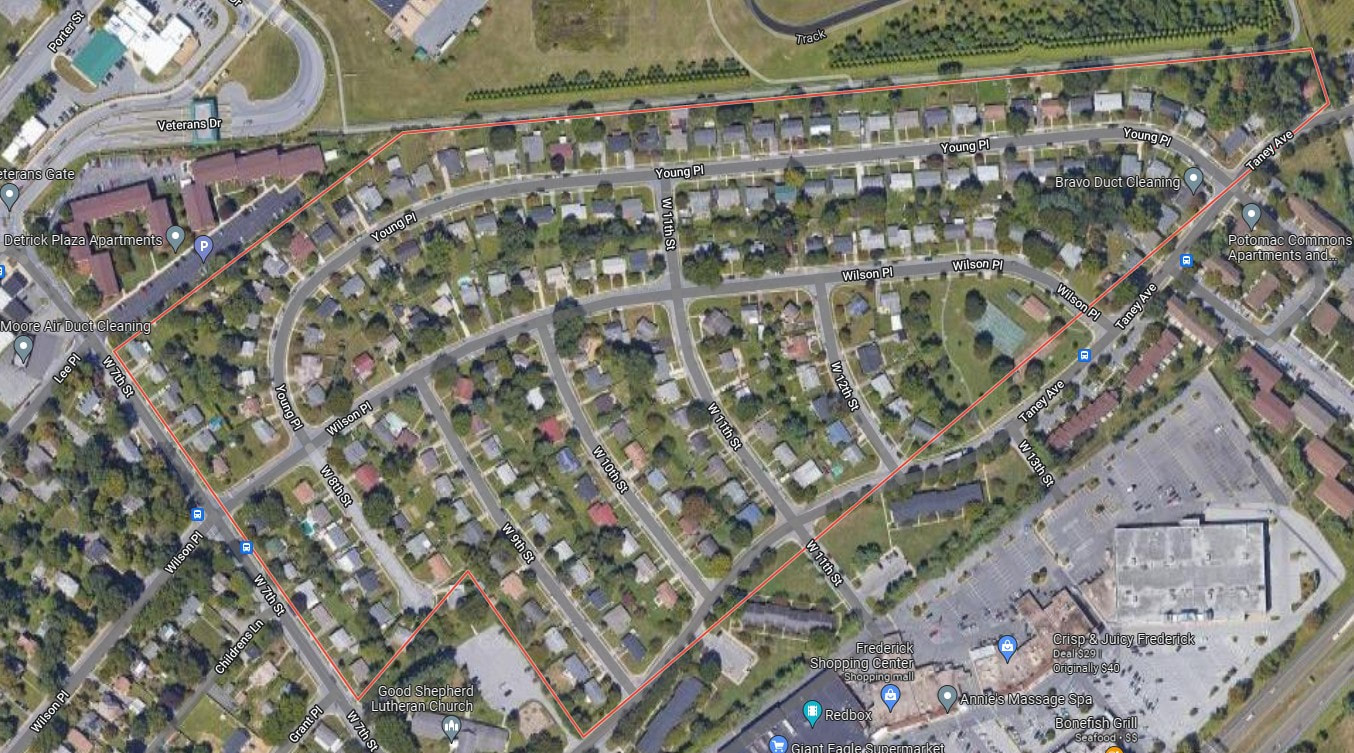
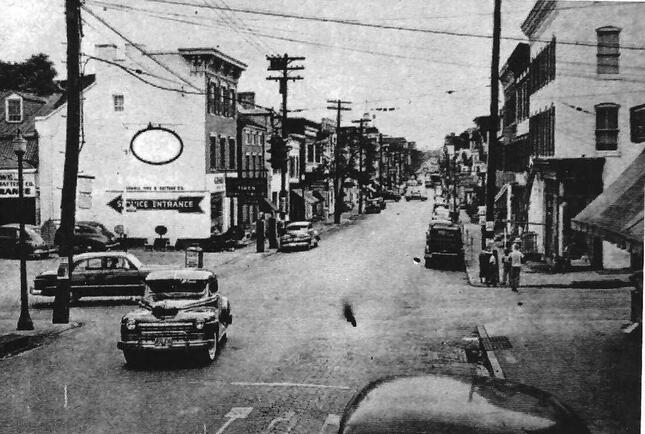









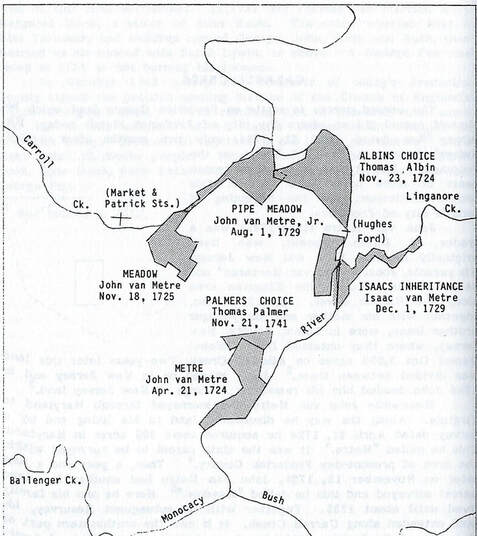










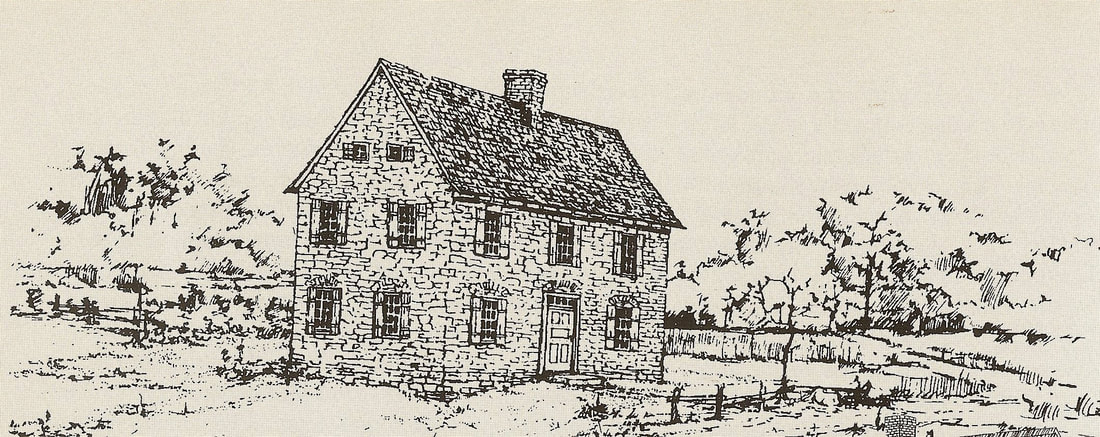























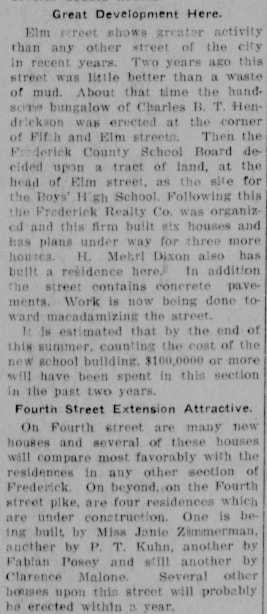
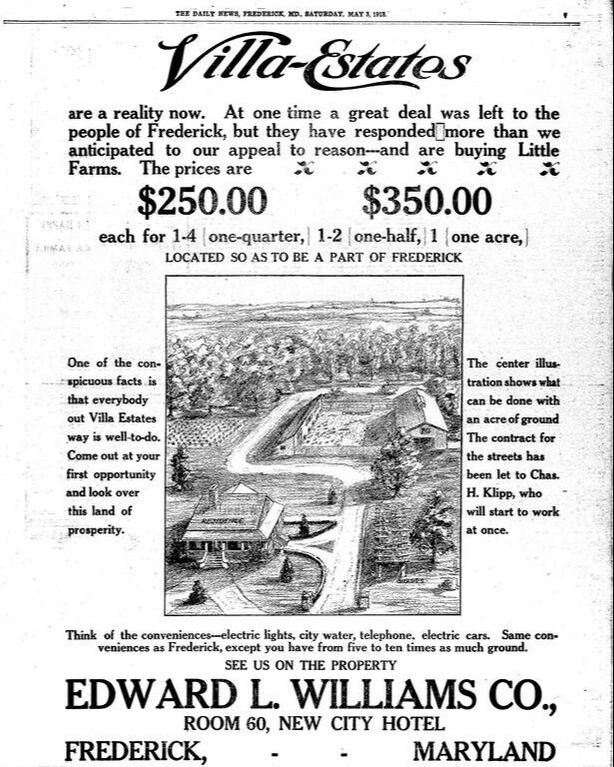









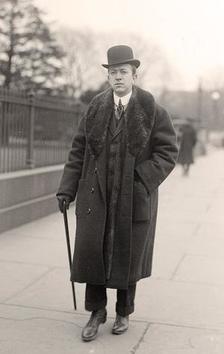

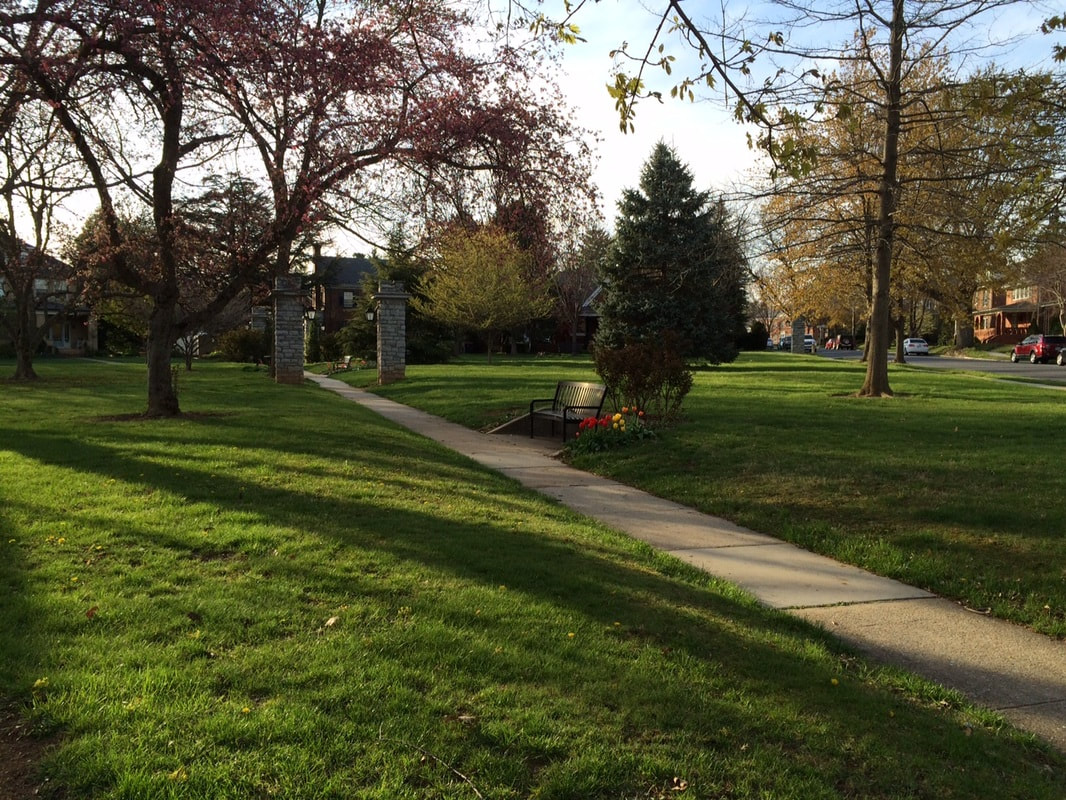
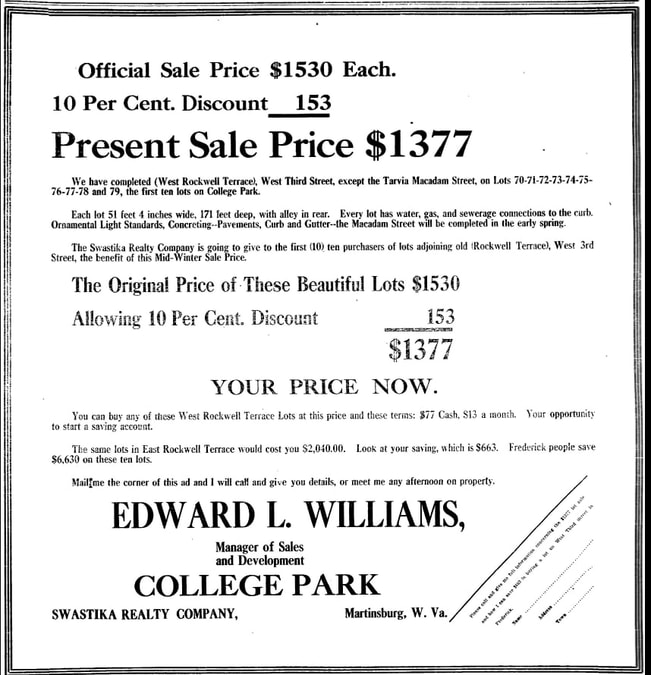




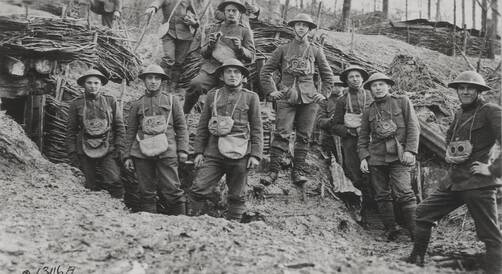

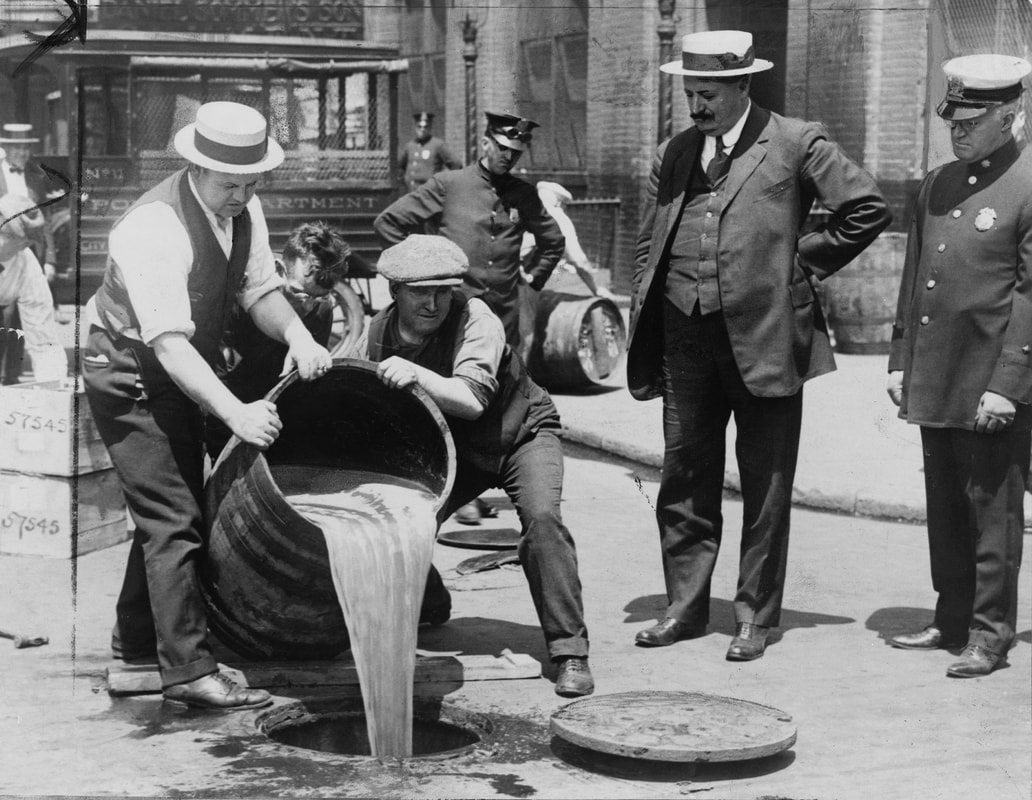


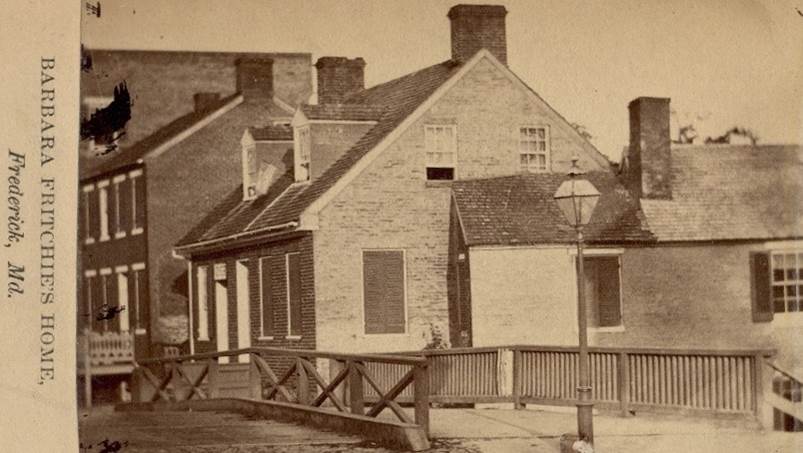




 RSS Feed
RSS Feed